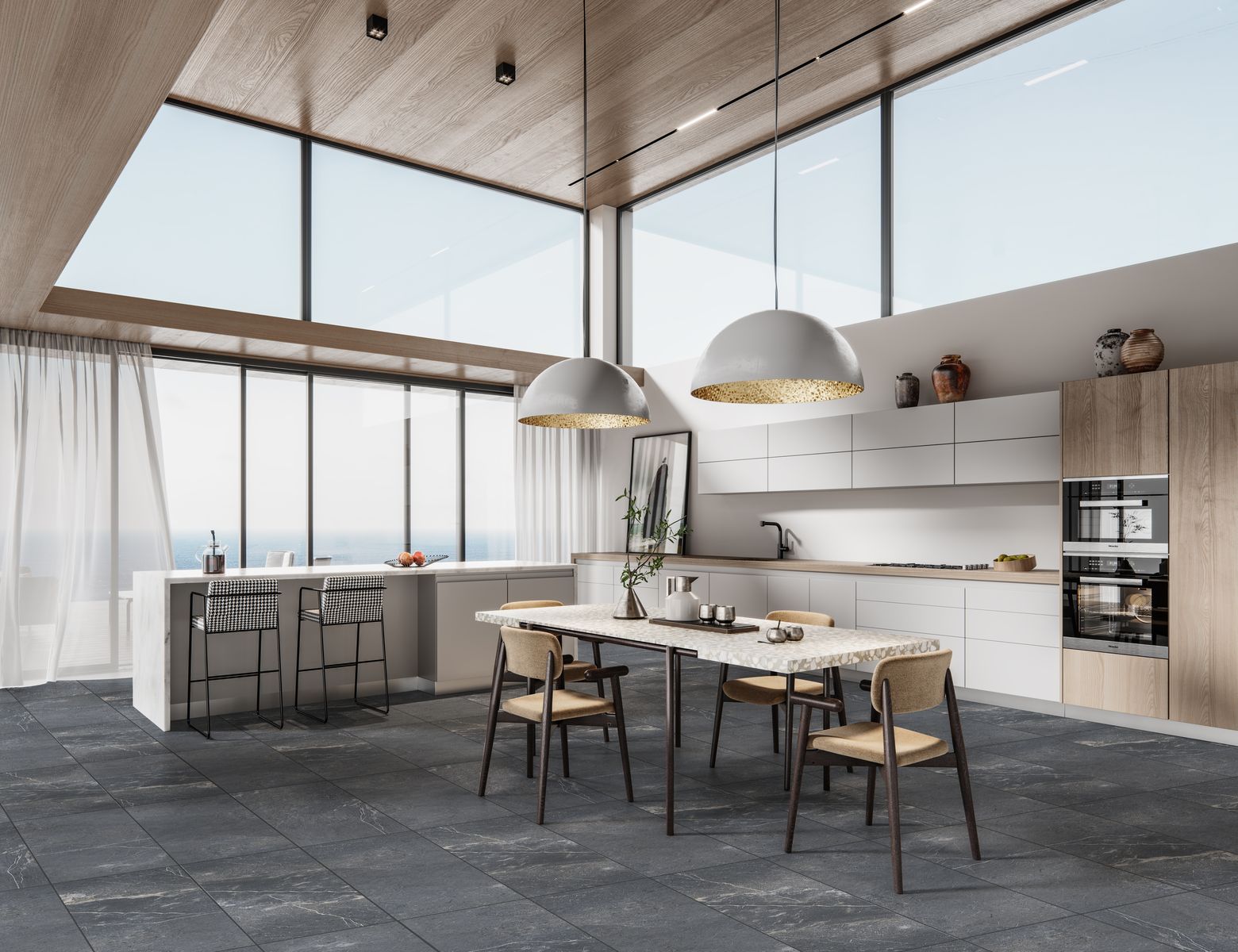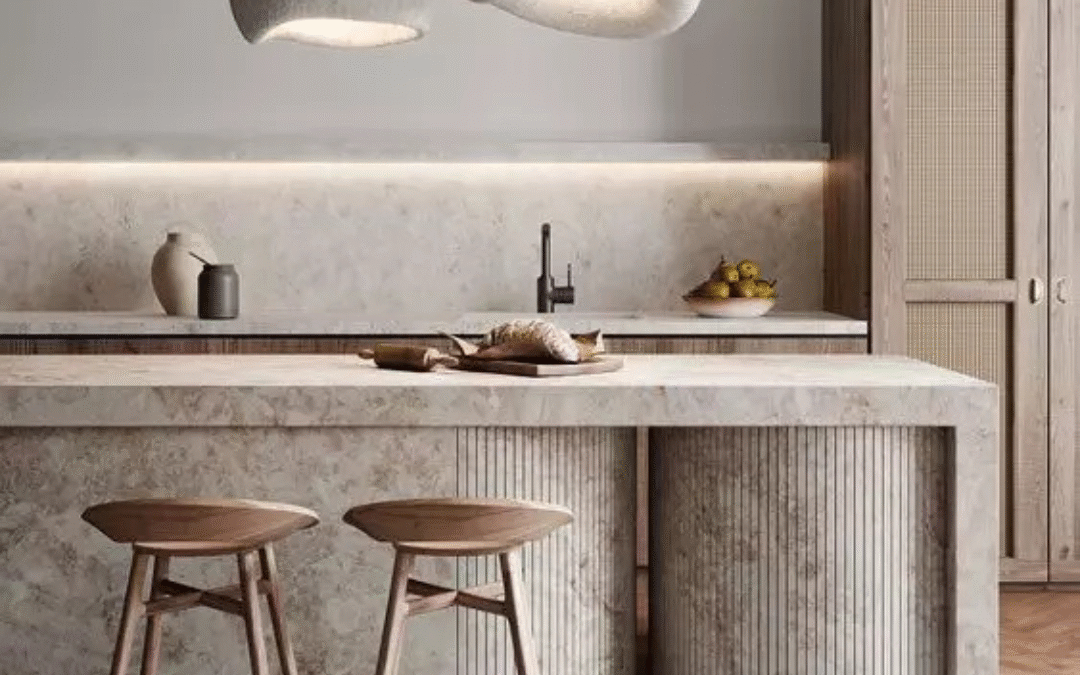
bathroom, blog, interior design tips, kitchen, trends
There’s a new style on the interior design scene, and it’s winning over homeowners and designers alike. Meet Japandi — the perfect blend of Japanese minimalism and Scandinavian functionality. If you’re looking for a calm, clutter-free and timeless look in your home, Japandi might be exactly what you need.
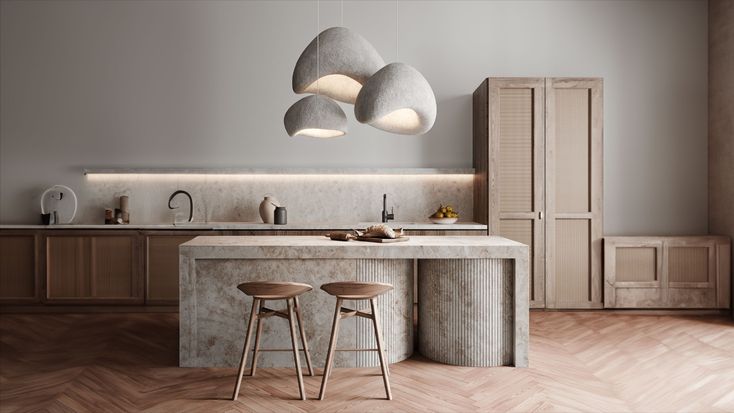
Table of Content:
What Is Japandi Style?
Why Is Japandi Gaining Popularity?
How to Bring Japandi into Your Home
Japandi in Every Room
Tiles and Japandi
Browse our collection of Japandi-inspired pieces
What Is Japandi Style?
Japandi is a fusion of two design philosophies.
On one side, you have Japanese interior design — simple, elegant and rooted in nature.
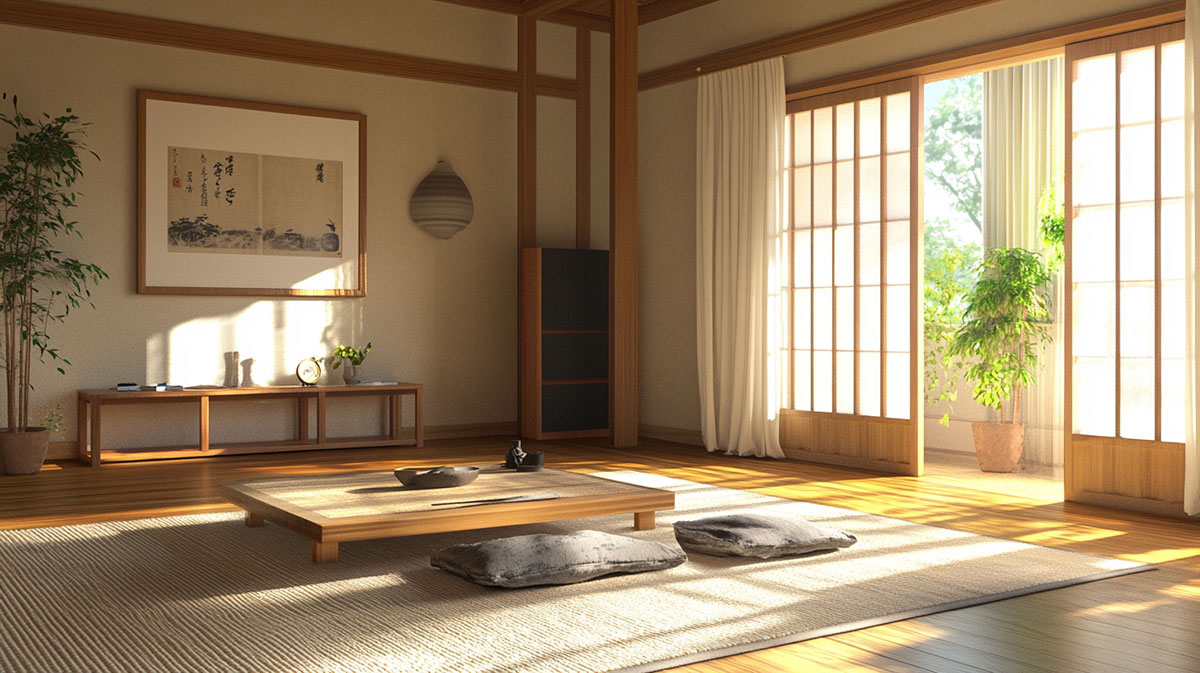
Image credit: awedeco.com
On the other, you have Scandinavian style — warm, functional and focused on comfort.
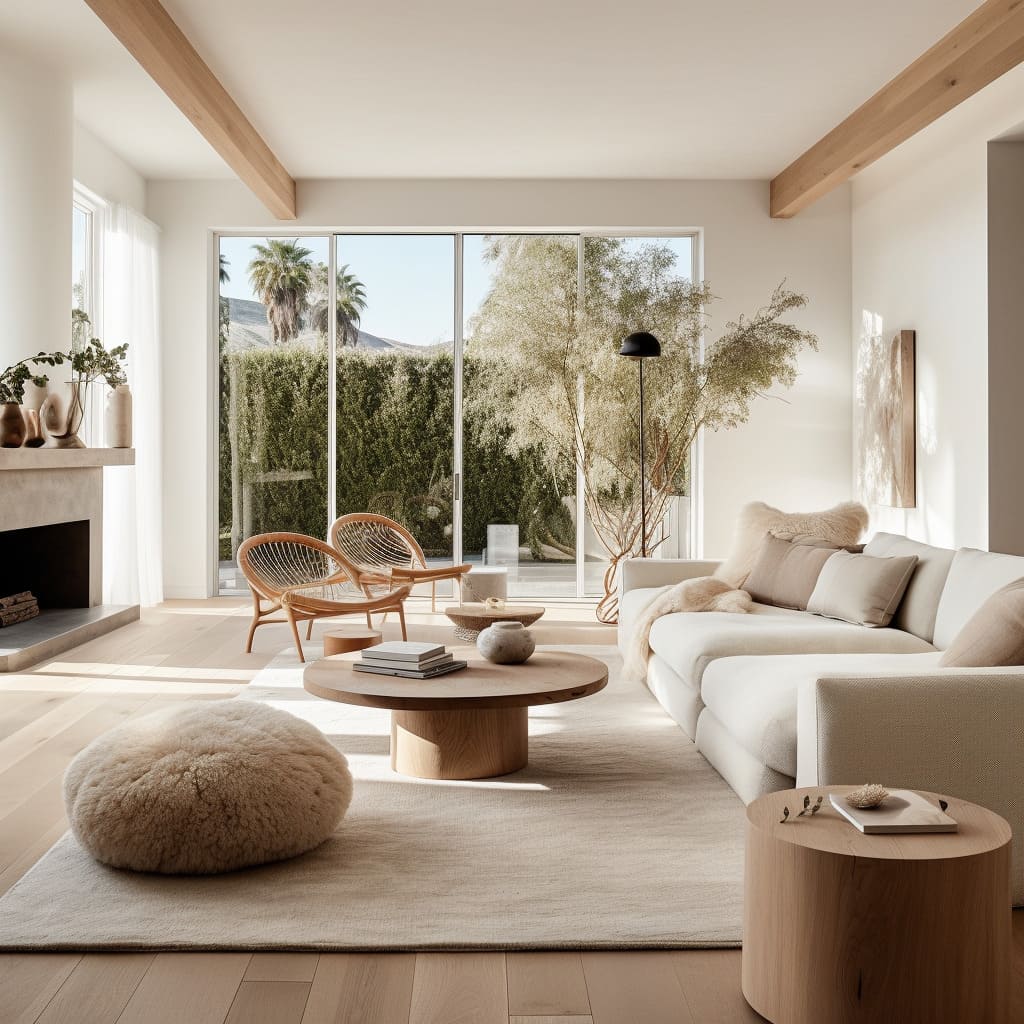
Image credit: fancyhouse-design.com
Together, they create a space that feels both modern and lived-in.
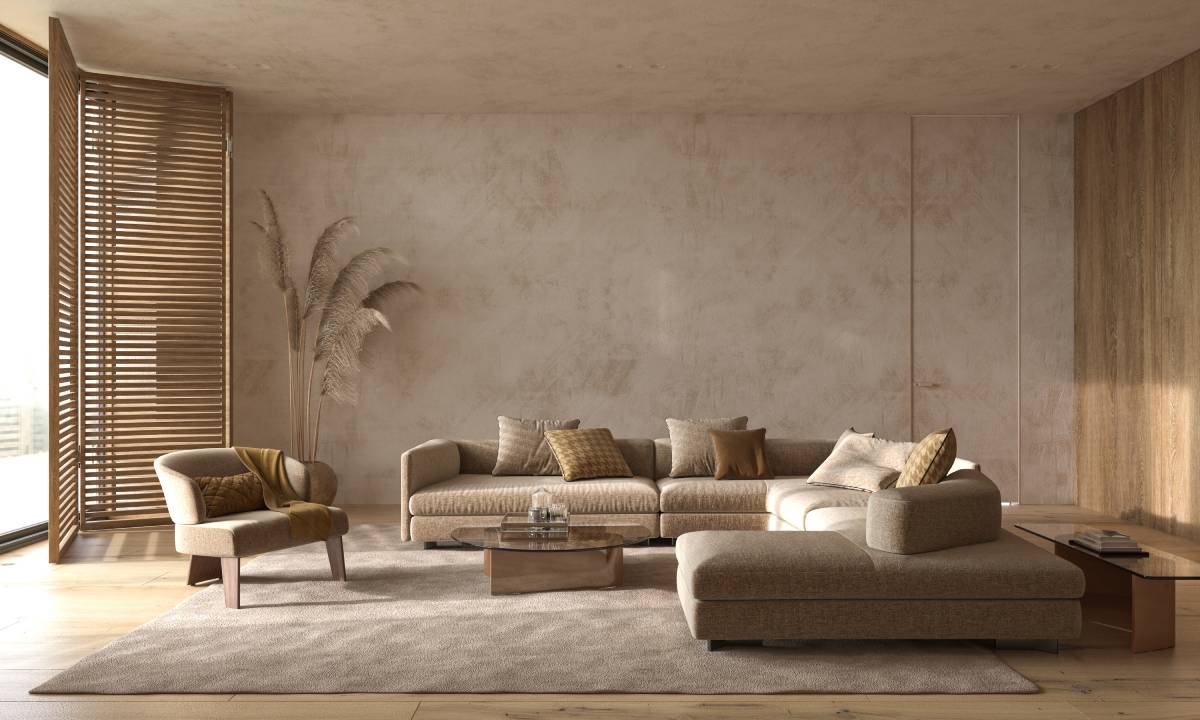
The Japandi trend focuses on clean lines, natural materials and muted colours. It values craftsmanship over mass production and encourages intentional living — only keeping what’s necessary and meaningful.
Why Is Japandi Gaining Popularity?
In today’s fast-paced world, many people are looking for ways to create a more calming and grounded home environment. Japandi offers exactly that. It’s not about filling your home with things — it’s about choosing the right things.
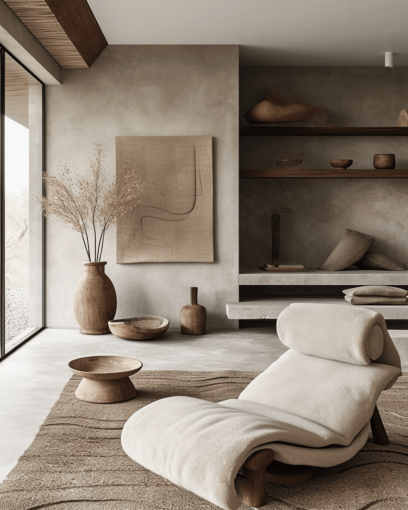
Image credit: edwardgeorgelondon.com
Minimalist yet cosy, Japandi interiors promote wellbeing. Think soft linen throws, warm wood tones and stone finishes. Neutral colour palettes dominate the look, with shades of beige, taupe, sage green and charcoal taking centre stage.
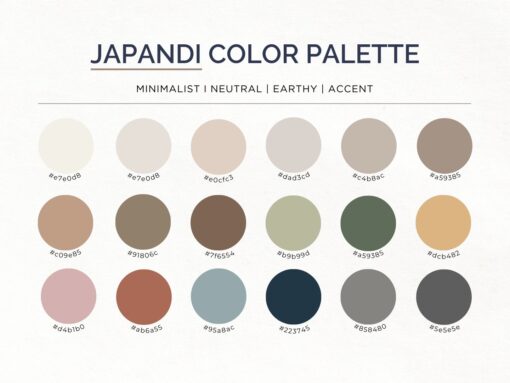
Image credit: global.fujioh.com
The rise in sustainable living has also played a role. Japandi leans into eco-conscious design — using natural fibres, recycled materials and quality over quantity.
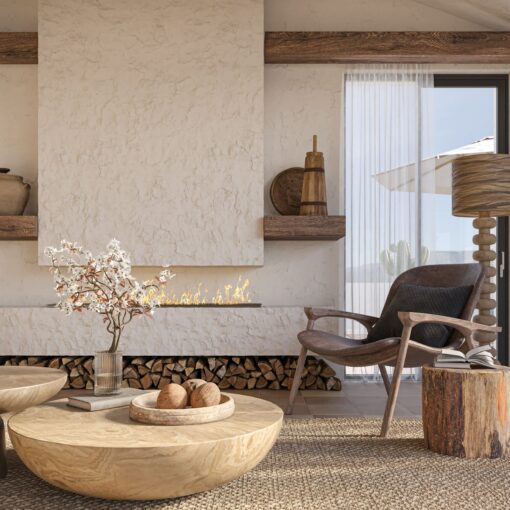
Image credit: annarosemann.com
How to Bring Japandi into Your Home
You don’t need a full renovation to try this trend. Small changes can go a long way.
Start with decluttering
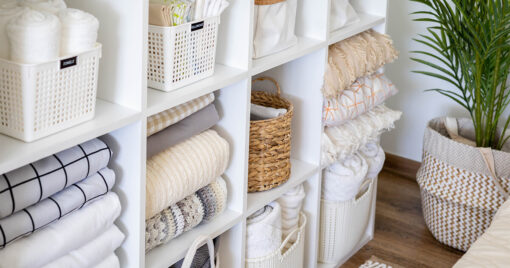
Image credit: edmontonrealestatepro.ca
Keep only the essentials and clear your surfaces.
Choose quality materials
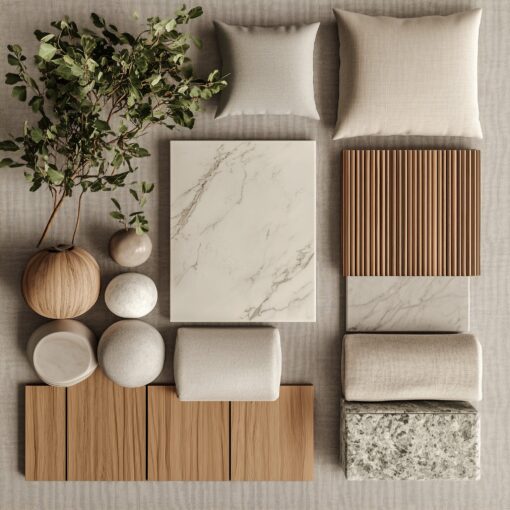
Image credit: global.fujioh.com
Invest in wood, linen, stone and ceramic.
Use a muted colour palette
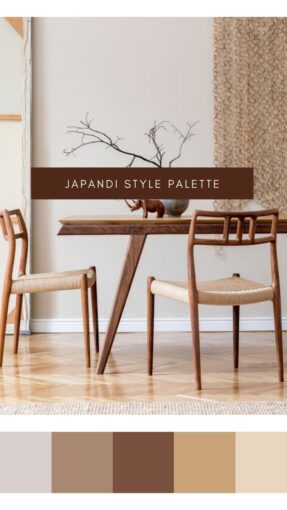
Image credit: Pinterest:@KunitsaHome
Stick to earthy tones like terracotta, sand and grey.
Add plants
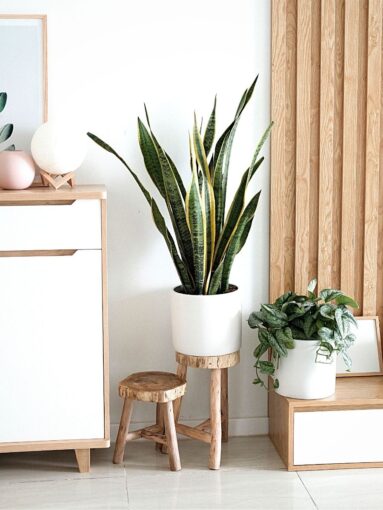
Image credit: thursd.com
Nature is central to Japandi, so bring in greenery with simple planters.
Focus on function
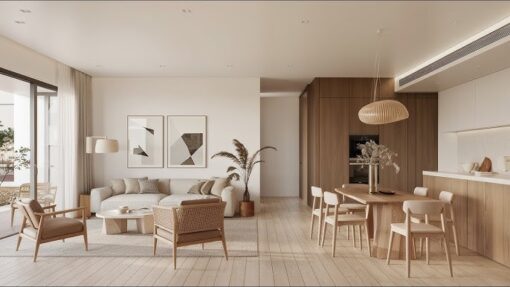
Image credit: houseploy.com
Every piece should serve a purpose and look good doing it.
Japandi in Every Room
Living Room
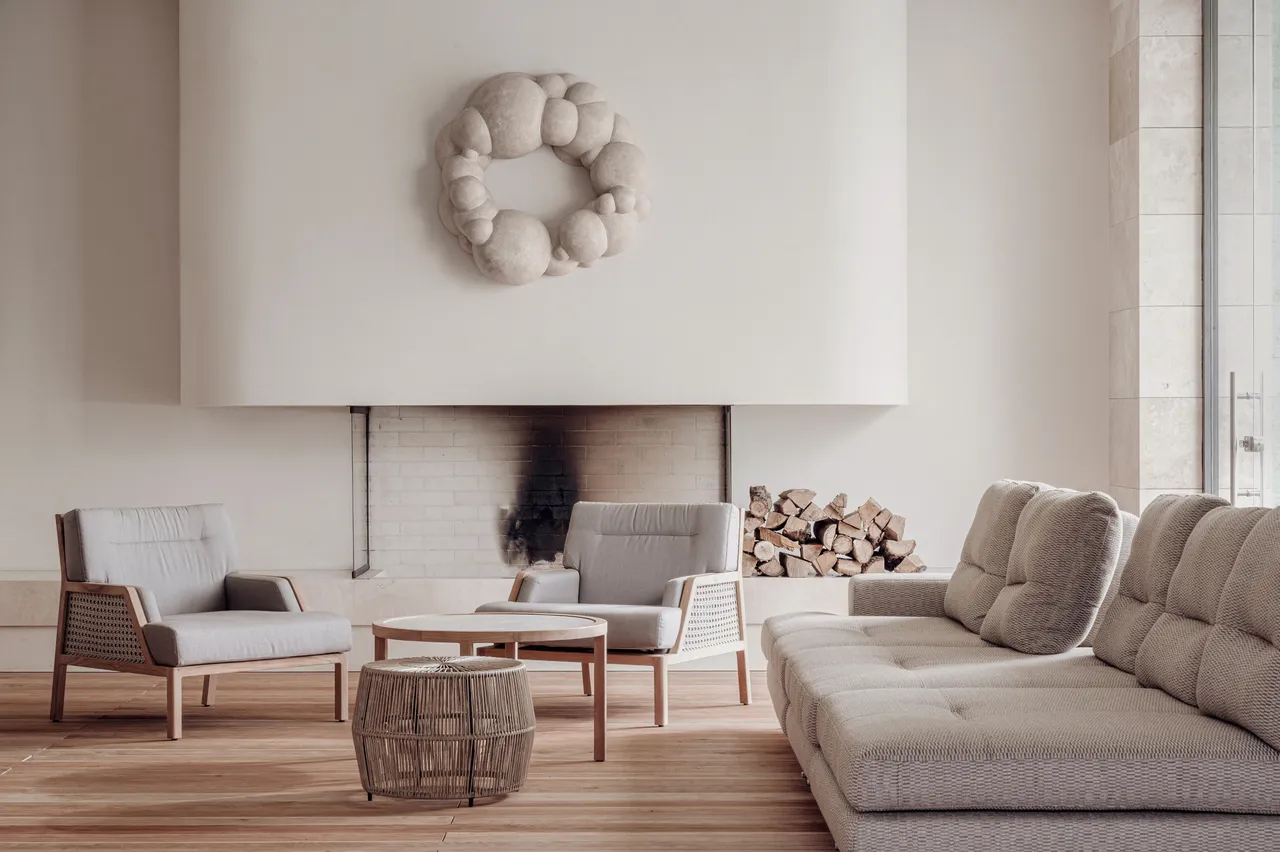
Image credit: livingetc.com
Go for low-profile furniture, woven textures and neutral cushions.
Bedroom
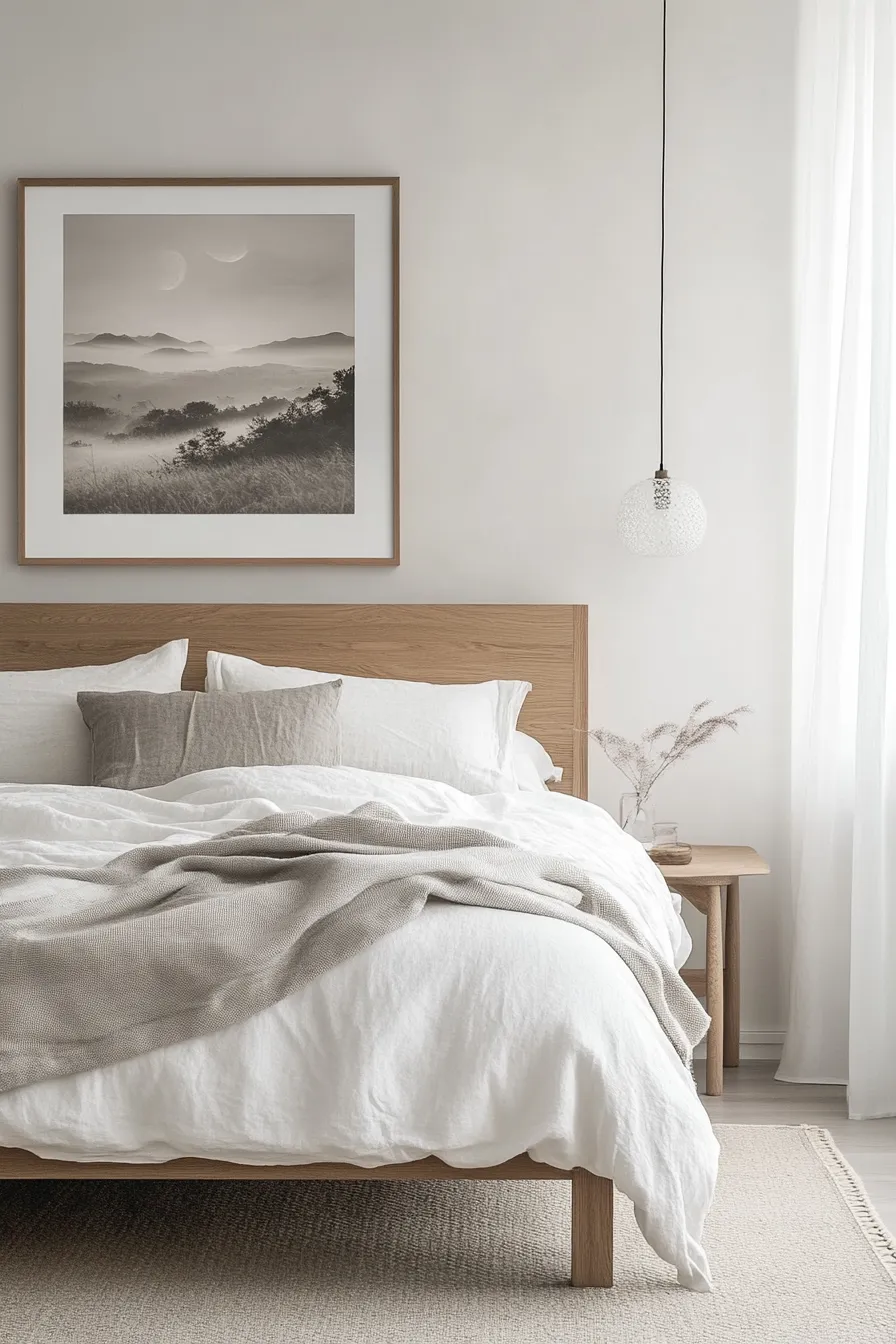
Image credit: edwardgeorgelondon.com
Keep it serene with soft lighting, crisp bedding and a calming palette.
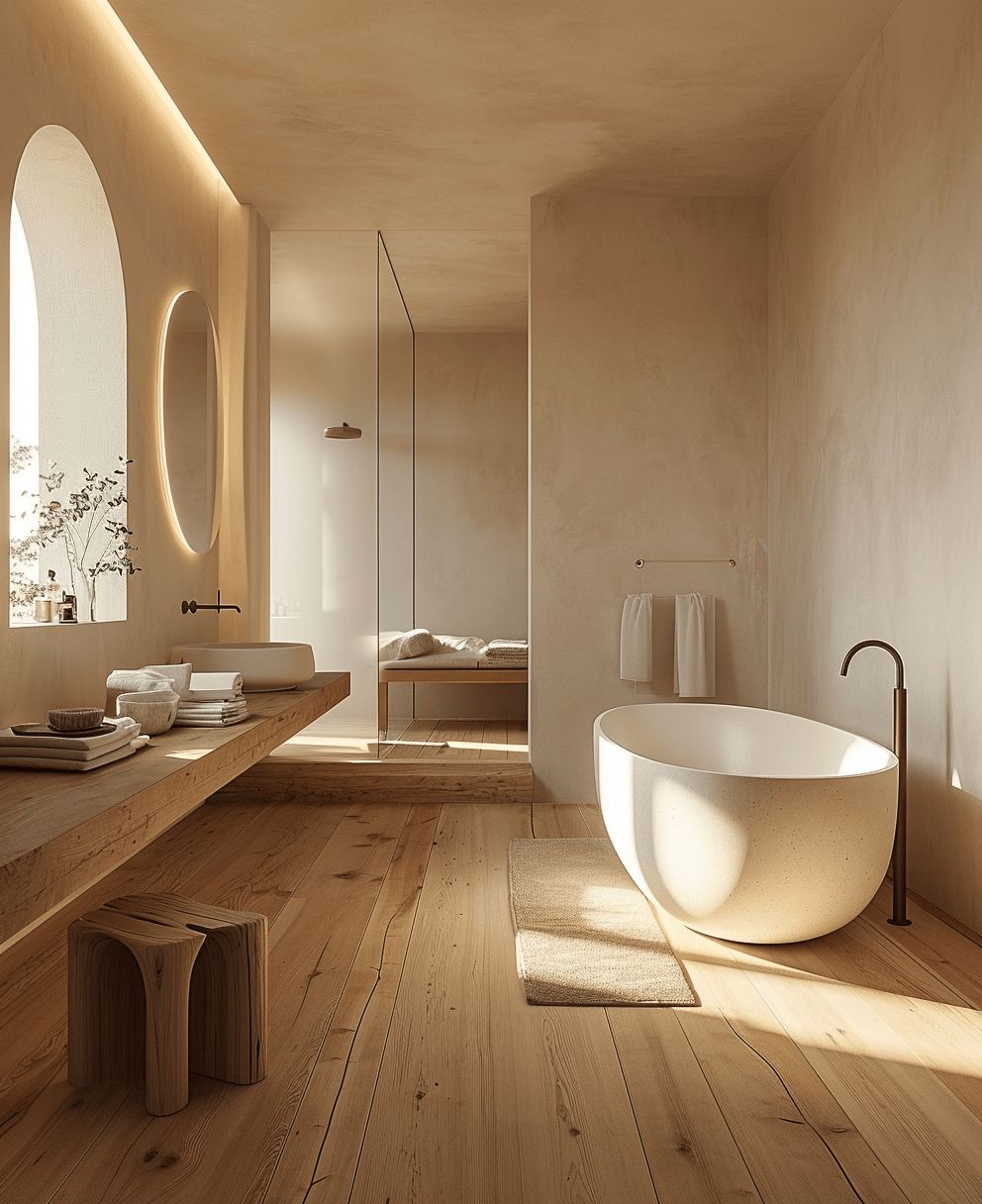
Image credit: edwardgeorgelondon.com
Choose clean finishes, minimal décor and natural touches like wood or stone.
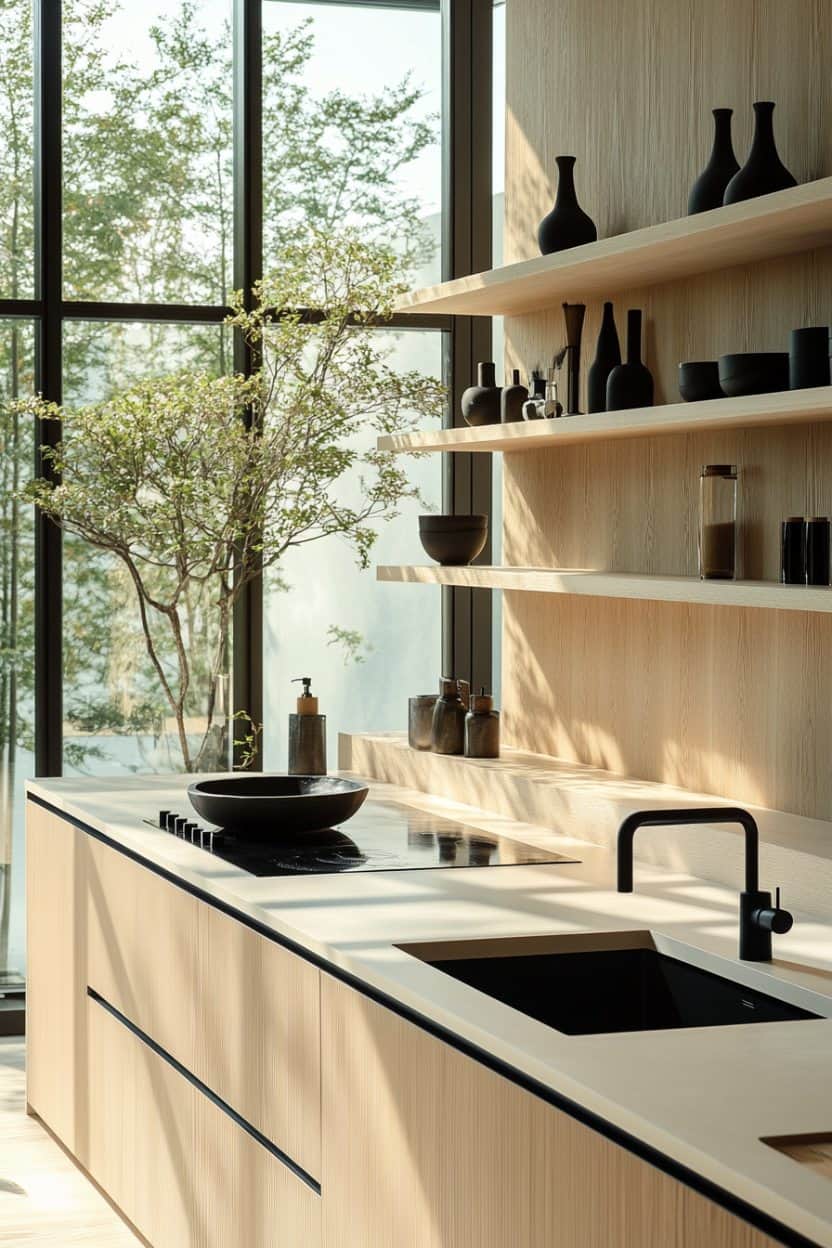
Image credit: hello-hayley.com
Pair sleek surfaces with warm wood cabinets and matte black fixtures.
Tiles and Japandi
Tiles are a great way to embrace the Japandi aesthetic. Think large format stone-look tiles for floors, soft textured wall tiles or handmade ceramic splashbacks. Matte finishes work best to avoid too much shine. You want the space to feel natural and calm, not glossy and loud. Wood-look vinyl, laminate or engineered wood flooring also fits perfectly with the Japandi style, offering the warmth of timber with added durability and easy maintenance — ideal for creating that serene, minimalist feel.
Japandi isn’t just a trend — it’s a lifestyle shift. It’s about stripping back the noise and embracing simplicity, comfort and mindfulness in the way we live. Whether you’re redesigning a single room or your entire home, Japandi offers a timeless and peaceful solution.
Looking for tiles or design elements that suit the Japandi style? Bring your moodboard or Pinterest inspo to our showroom and we’ll help you choose pieces that bring your vision to life. Browse our collection of Japandi-inspired pieces below to get started.
Browse our collection of Japandi-inspired pieces

blog, interior design tips
Choosing the right colour palette can completely transform your home. Whether you’re updating a single room or planning a full renovation, your choice of colours will influence the mood, functionality and longevity of your space. If you’re looking to strike the perfect balance between modern style and timeless appeal, you’re in the right place. Let’s explore the best colour palettes that never go out of fashion.
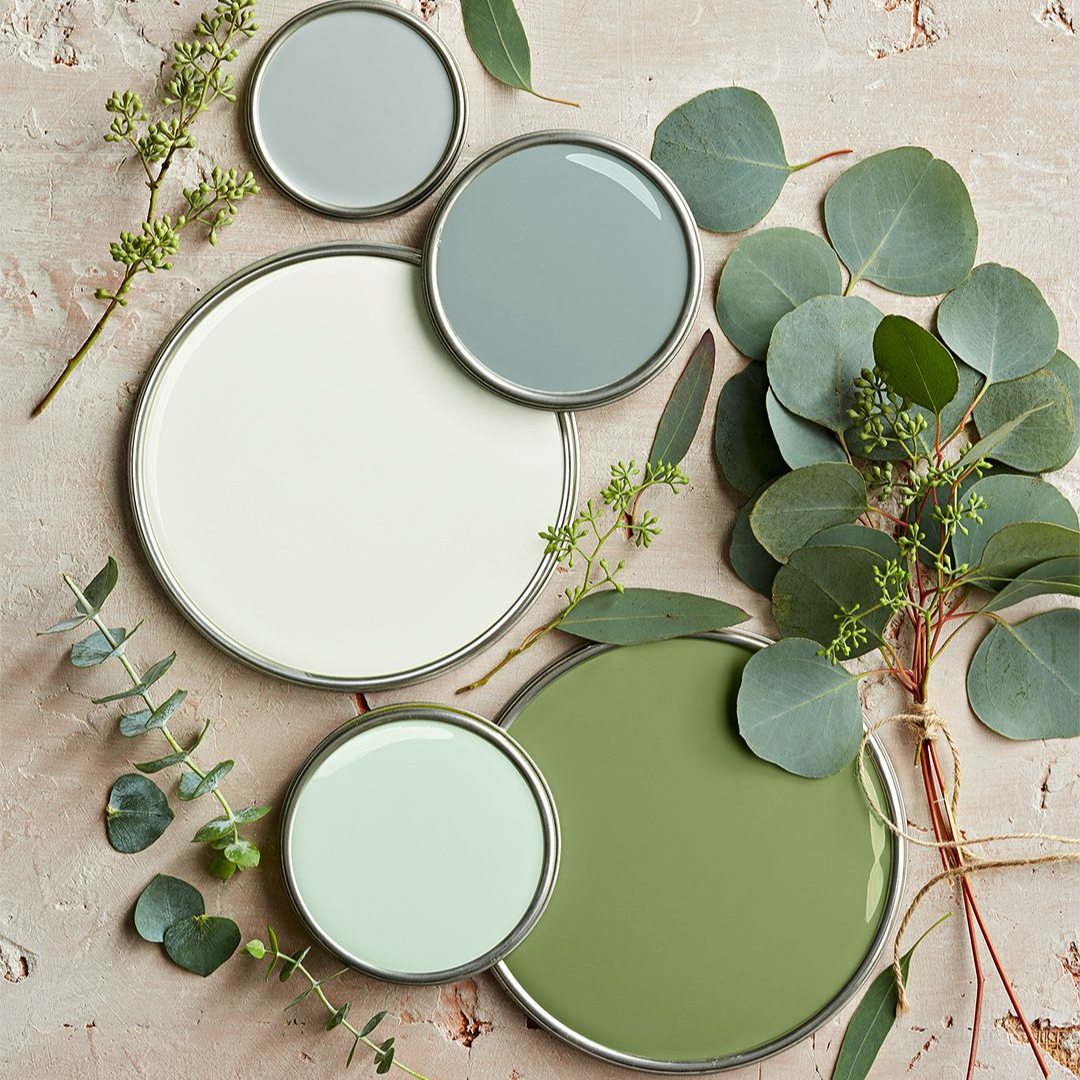
Table of Content:
Warm Neutrals
Monochrome Elegance
Soft Blues & Cool Greys
Earthy Greens & Olive Tones
Classic Greyscale
Muted Terracotta & Dusty Pink
Warm Neutrals
Warm neutrals are a go-to for creating a cosy, inviting space. Think shades of beige, taupe, greige and warm whites. These tones work beautifully in living rooms, bedrooms and kitchens, especially when paired with natural materials like wood and stone. They create a soft, grounded feel that won’t feel outdated in a few years.
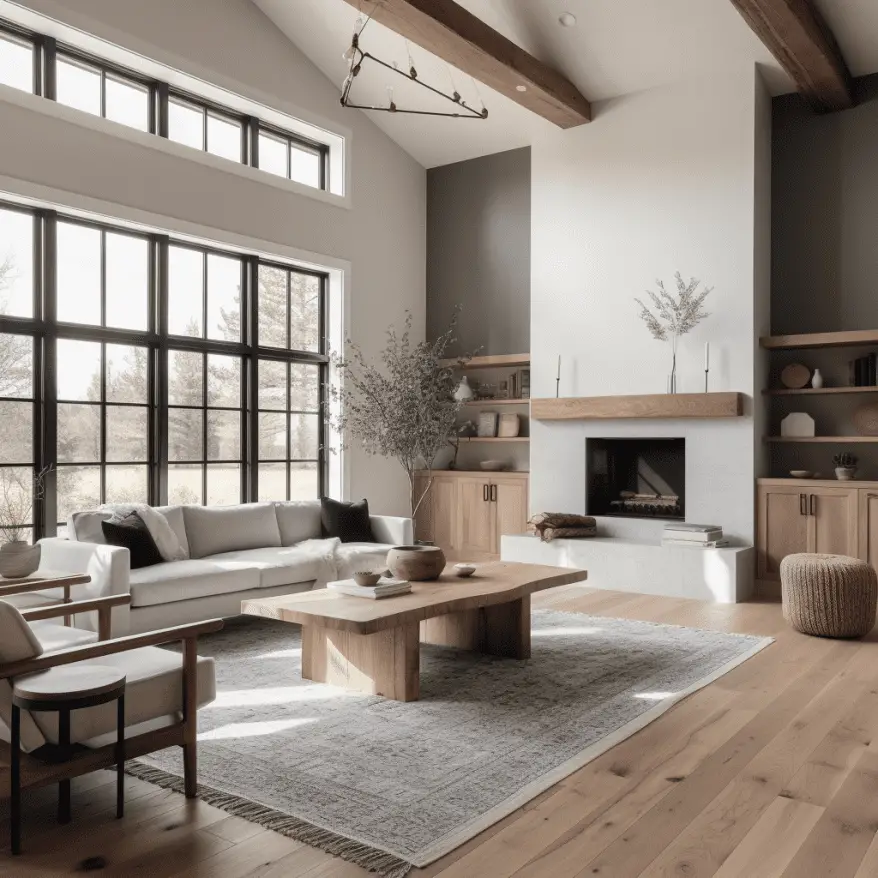
Image Credit: axxla.com
Best for: open-plan spaces, minimalist interiors and layering textures
Pair with: wood look flooring, ceramic tiles and soft furnishings in earthy hues
Monochrome Elegance
A black and white palette is the definition of timeless. It’s bold, clean and endlessly versatile. Monochrome doesn’t mean boring – you can add depth through different finishes, patterns and textures. Think matte black fixtures against crisp white tiles or a dramatic black feature wall in an all-white room.

Image Credit: cosentino.com
Best for: bathrooms, kitchens and modern industrial designs
Pair with: high-contrast tiles, glossy surfaces and simple geometric patterns
Soft Blues & Cool Greys
Looking for a calm and sophisticated vibe? Soft blues paired with cool greys bring serenity into any space. These tones are great for coastal-inspired interiors or minimalist homes with a Scandinavian twist. They also play nicely with natural light, making rooms feel airy and open.
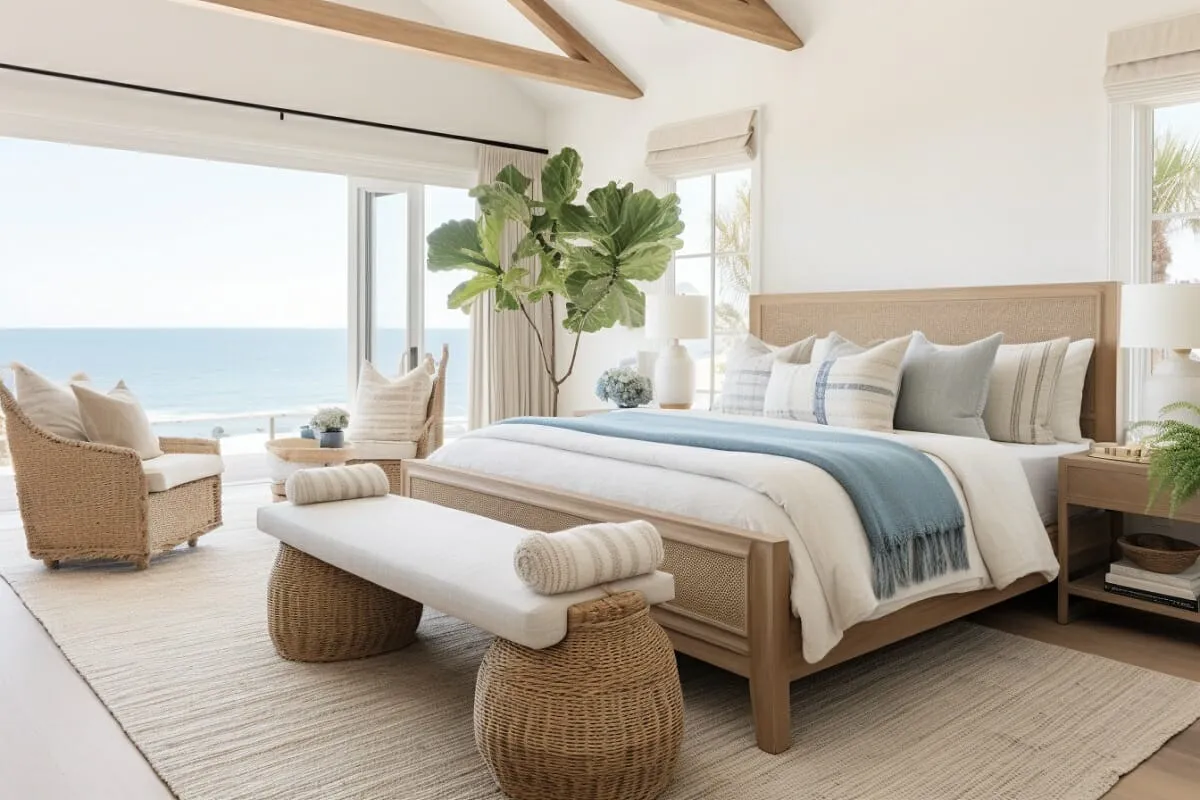
Image Credit: decorilla.com
Best for: bedrooms, bathrooms and small spaces
Pair with: light oak flooring, white accessories and subtle metallic finishes
Earthy Greens & Olive Tones
Nature-inspired colours are huge right now and they’re not going anywhere. Olive green, sage and muted forest shades feel organic and grounding. These colours work especially well when combined with natural textures like stone, clay and rattan.
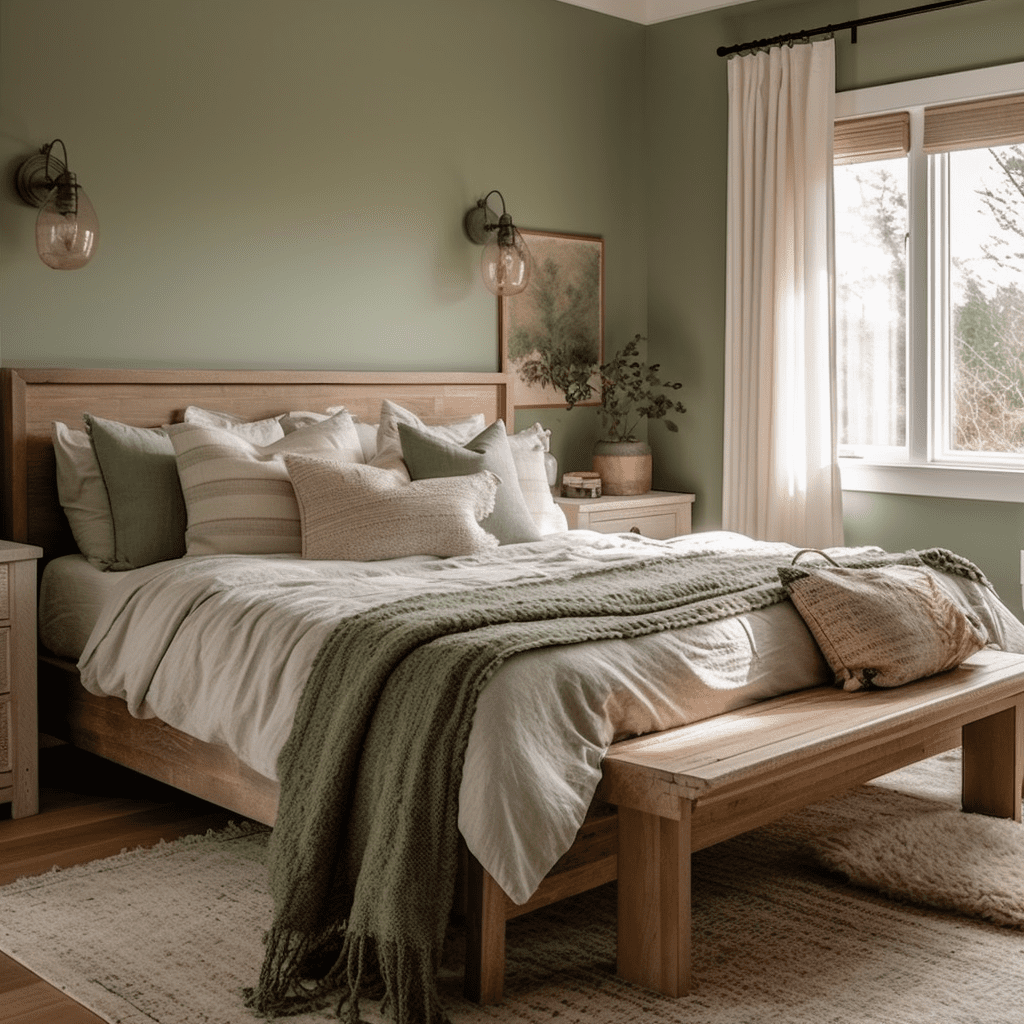
Best for: living areas, entryways and biophilic design schemes
Pair with: terracotta tiles, concrete finishes and indoor plants
Classic Greyscale
From pale dove grey to rich charcoal, greys remain a staple in modern home design. They provide a clean backdrop that lets other design elements shine. Use different tones of grey to create depth and interest without overwhelming the space.
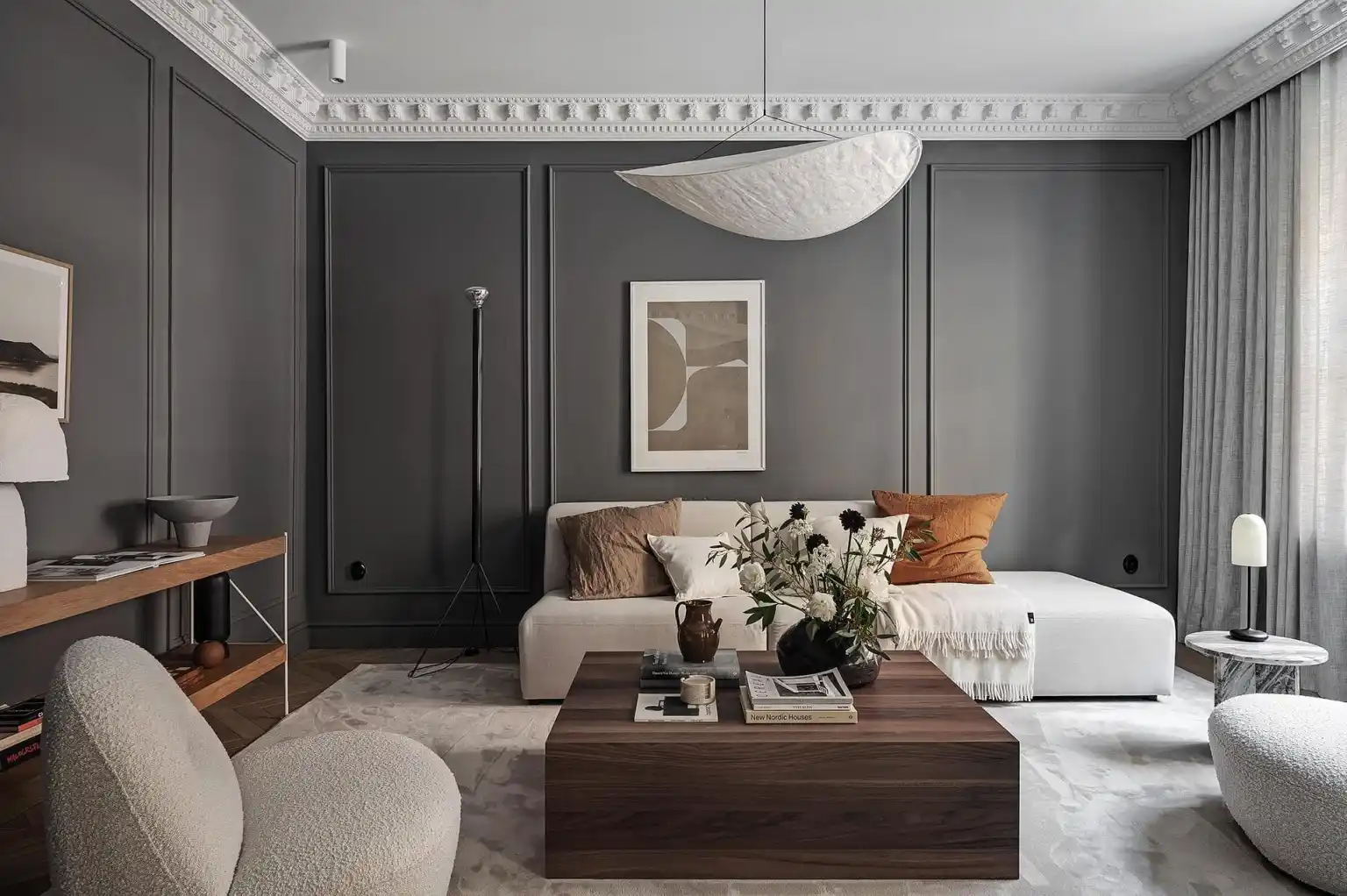
Image Credit: cocolapinedesign.com
Best for: entire home colour schemes or feature walls
Pair with: marble-look tiles, chrome hardware and accent lighting
Muted Terracotta & Dusty Pink
Looking to warm things up without going too bold? Muted terracotta and soft pinks add a sense of comfort and charm. These colours bring in a subtle vibrancy while maintaining a sophisticated grown-up feel.
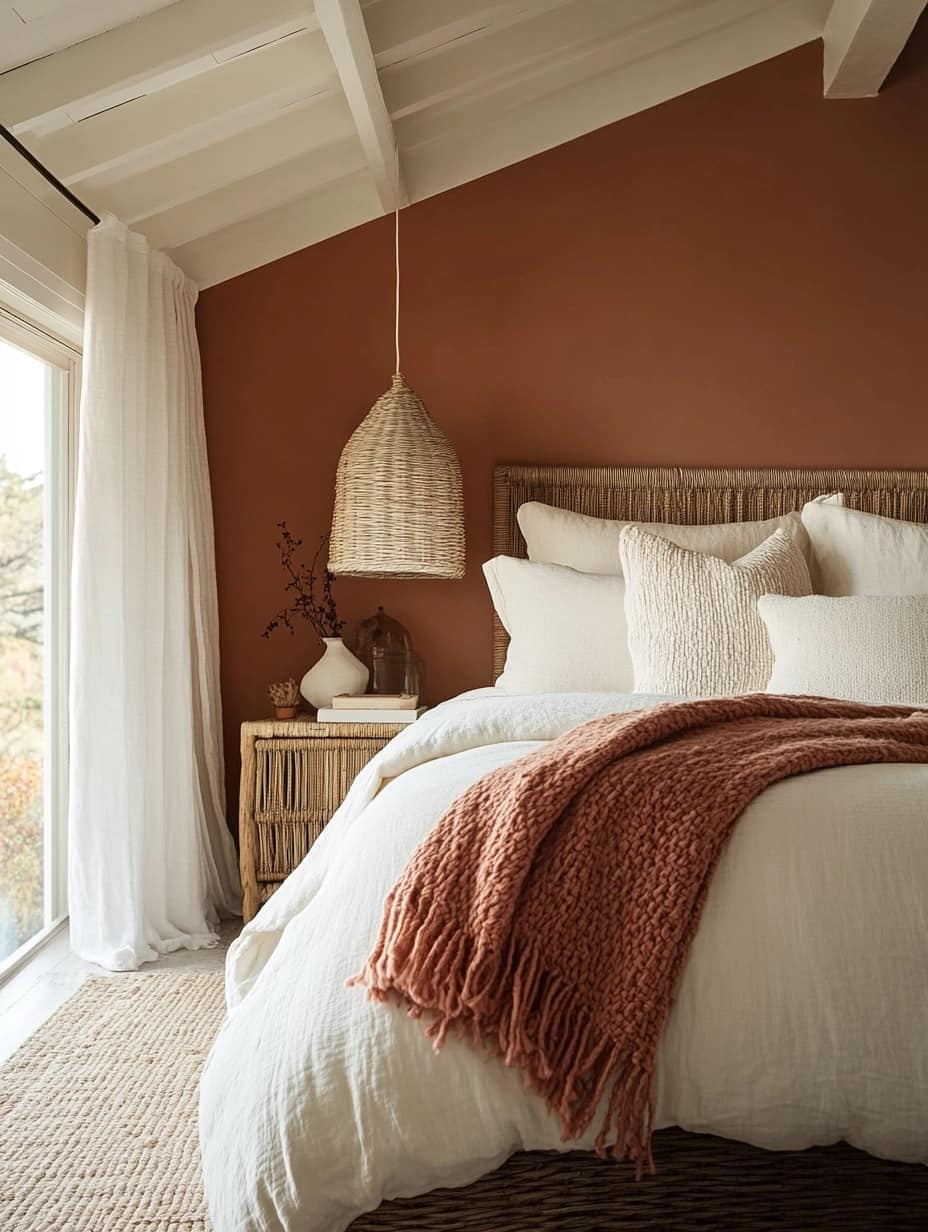
Image credit: Living Bright Interiors
Best for: bedrooms, reading nooks and creative studios
Pair with: warm wood tones, neutral tiles and textured fabrics
The best colour palette for your home should reflect your personal style while standing the test of time. Whether you’re drawn to clean monochromes, calming blues or warm neutrals, there’s a timeless palette that can suit your space. The key is to balance colour with texture, lighting and materials to create a cohesive look that feels modern and lived-in.
Need help choosing tiles or flooring to match your colour scheme? Explore our collections at Tiletoria for timeless finishes that elevate every room.
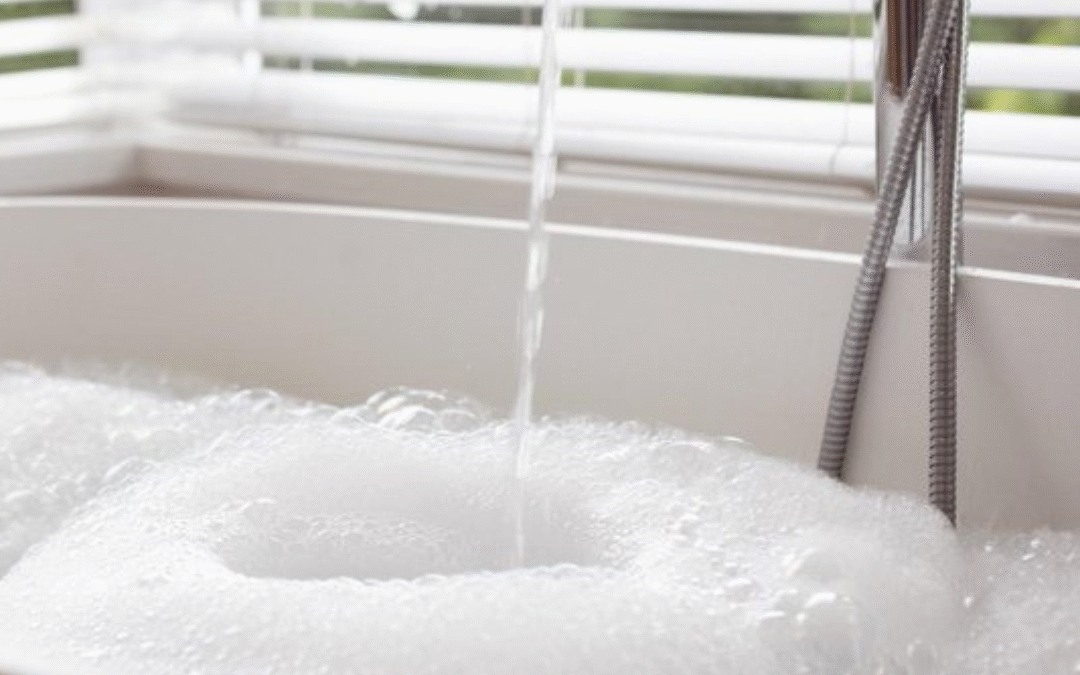
bathroom, blog, kitchen
Ever turned on a tap and wondered why the water dribbles out slowly or blasts out with unexpected force? The answer lies in water pressure — a crucial factor that affects everything from your morning shower to how efficiently your kitchen tap fills the kettle. Understanding water pressure helps you get the best performance from your taps and ensures your plumbing system runs smoothly.
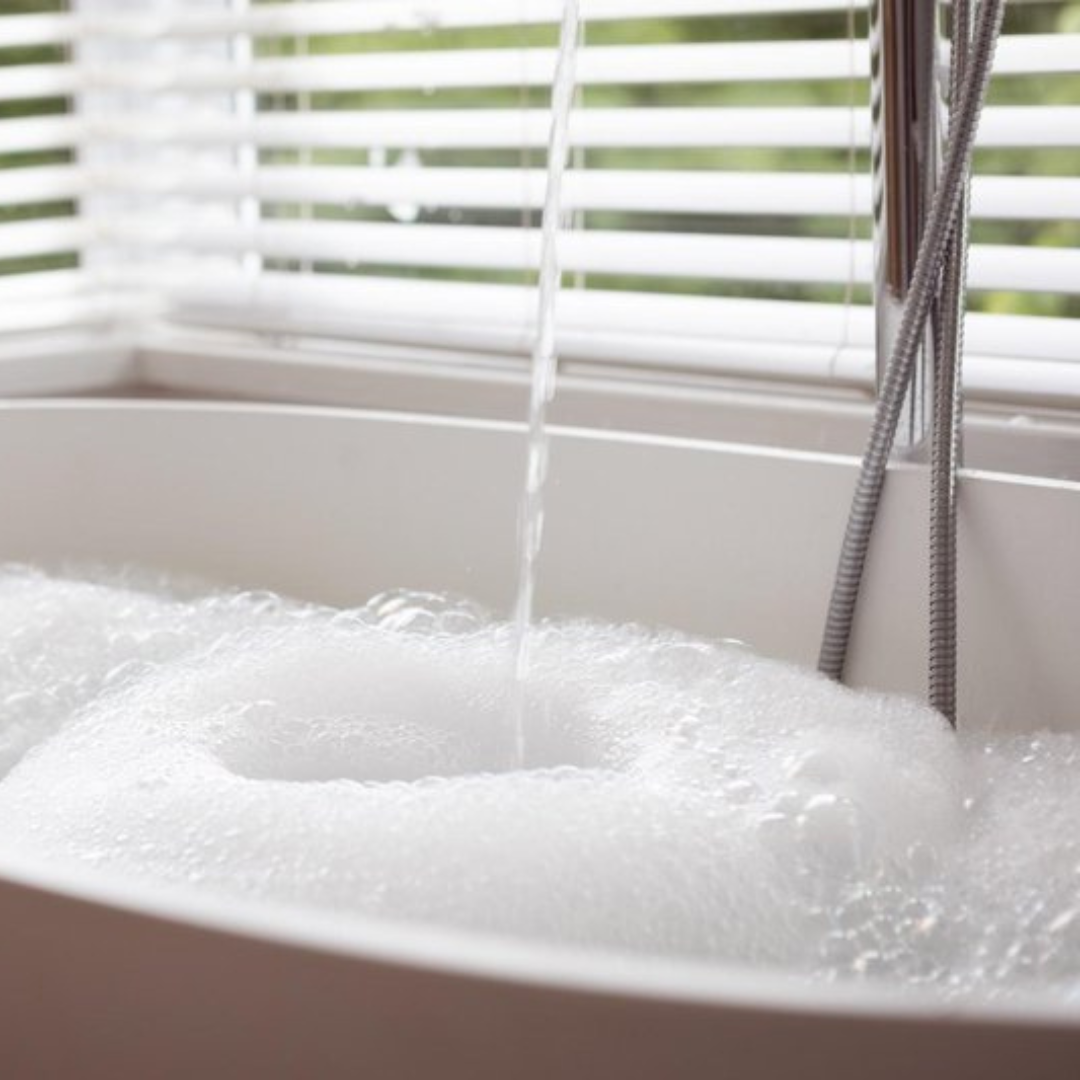
Table of Content:
What is Water Pressure?
Why Water Pressure Matters for Your Taps
Common Signs of Pressure Problems
Causes of Low or High Water Pressure
How to Check Your Water Pressure
Tips for Maintaining Optimal Tap Performance
Tap Performance and Water-Saving Features
Browse our range of Bathroom Taps
Browse our range of Kitchen Taps
What is Water Pressure?

Water pressure is the force that pushes water through your pipes and out of your taps. It’s measured in bars, with one bar roughly equal to the pressure needed to raise water 10 metres. If your pressure is too low, your taps may trickle. If it’s too high, you could end up wasting water or even damaging fixtures.
Why Water Pressure Matters for Your Taps

Your taps are designed to work best within a certain pressure range. Too little pressure and you’ll find washing dishes, rinsing vegetables or even brushing your teeth frustrating. Too much pressure can create splashing, noise and unnecessary strain on seals and valves.
Common Signs of Pressure Problems
Here’s what to look out for:
Low pressure

Slow flow, weak showers, inconsistent temperature.
High pressure

Noisy pipes, banging sounds (also known as water hammer), leaks from taps or fittings.
Spotting these issues early can save you time and money on repairs.
Causes of Low or High Water Pressure

Image credit: ilanwater.com.au
Several factors affect your home’s water pressure:
Mains supply

The water company’s supply pressure can vary depending on your location and time of day
Pipework

Narrow or corroded pipes can restrict flow
Leaks

Even small leaks reduce pressure throughout your system
Appliance demand

Running multiple taps or appliances at once lowers available pressure
How to Check Your Water Pressure

You can test your home’s water pressure using a simple pressure gauge. Attach it to an outdoor tap or washing machine outlet to get a reading. The ideal pressure for most homes is between 1 and 3 bars. If it’s too high or too low, it might be time to consult a plumber or install a pressure regulator.
Tips for Maintaining Optimal Tap Performance
Install pressure regulators

These help control overly high pressure
Clean aerators

Mineral build-up can restrict flow from the tap head
Check for leaks

Regularly inspect taps and pipes for dripping or damp spots
Upgrade your tap

Modern taps are often more pressure-sensitive and efficient
Tap Performance and Water-Saving Features

Many modern taps come with built-in flow restrictors or aerators designed to conserve water without sacrificing pressure. These features work best when your home’s water pressure is well-balanced.
Water pressure might seem like a technical detail, but it makes a big difference to how your taps perform. Whether you’re washing up, filling a bath or watering the garden, getting the pressure just right ensures everything runs smoothly.
Want taps that deliver top performance every time? Explore our range of quality taps at Tiletoria and find the perfect tap to suit your pressure needs.
Browse our range of Bathroom Taps
Browse our range of Kitchen Taps
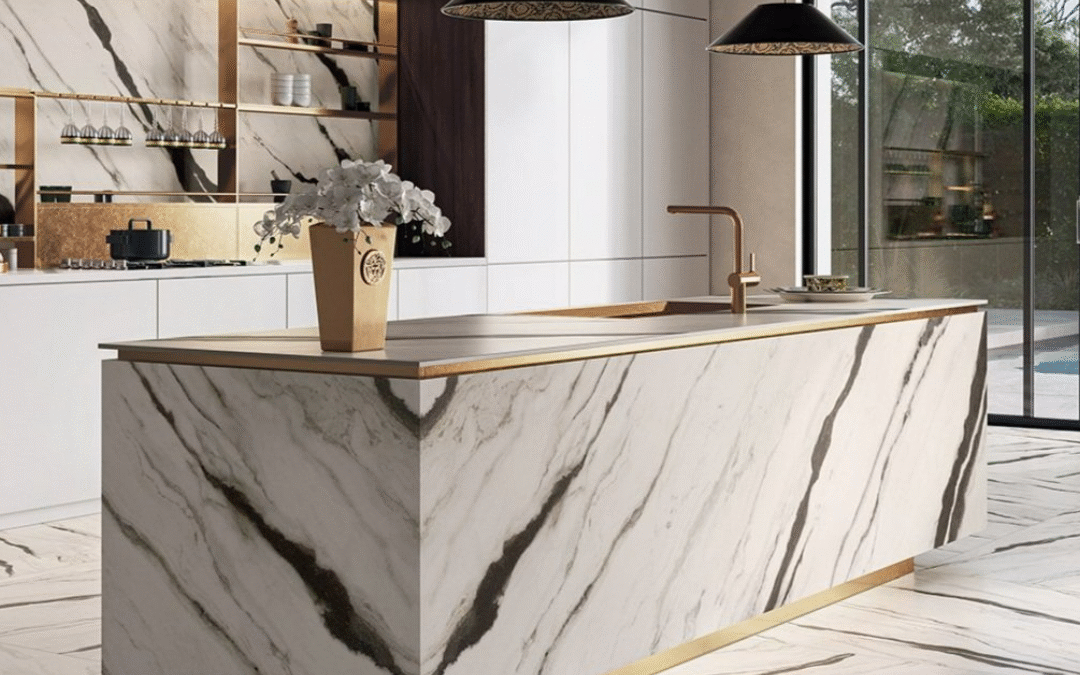
blog, commercial blog, floors, trends, walls
Tiles are a staple in interior design, known for their practicality, versatility and style. But not all tiles are created equal. Some take things to a whole new level — crafted with rare materials, intricate techniques or luxury finishes that turn them into works of art. Curious to know what the most expensive tiles in the world are and why they cost so much? Let’s explore the world of luxury tiles and what makes them truly special.
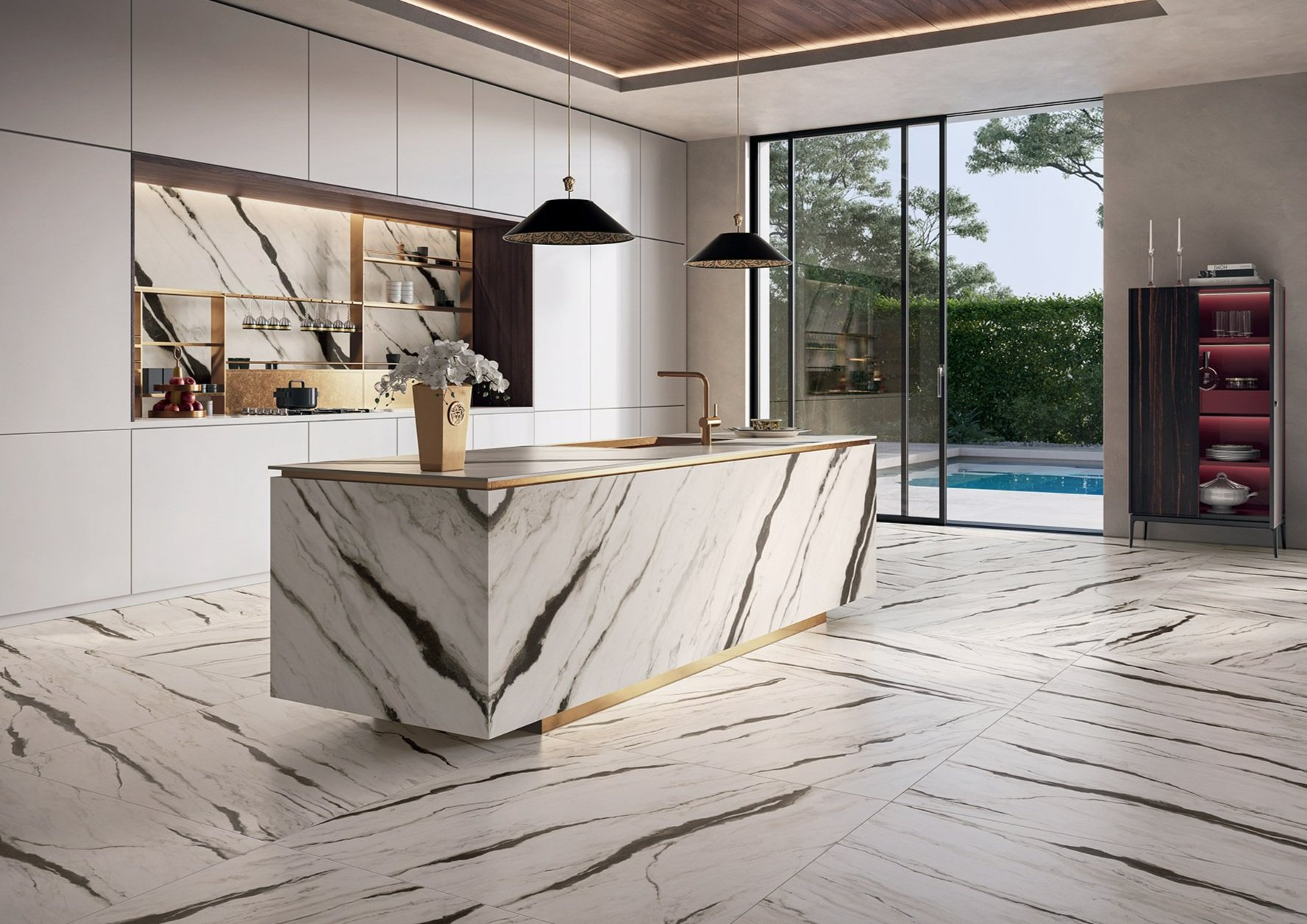
Image credit: versace-tiles.com
Table of Content:
What Makes a Tile Expensive?
Sicis Mosaic Tiles (Italy)
Petra Antiqua Tiles (Italy)
Versace Ceramics
Bisazza Mosaic Tiles
Antique Tiles & Historical Replicas
Are Expensive Tiles Worth It?
What Makes a Tile Expensive?
Before we dive into the most luxurious options out there, it’s worth understanding what factors drive up the cost of tiles:
Material
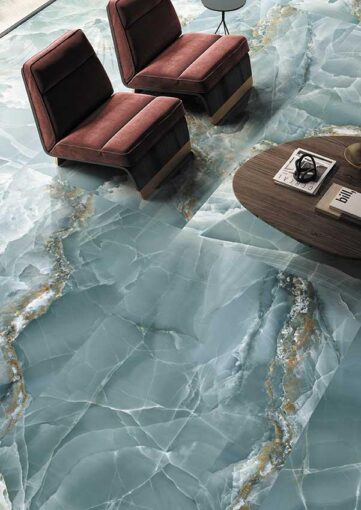
Image credit: tileclub.com
Natural stone like marble, onyx or rare granite tends to cost more than ceramic or porcelain.
Craftsmanship

Image credit: uniquetiles.com
Hand-painted, hand-cut or custom-made tiles involve more labour, which adds to the price.
Brand
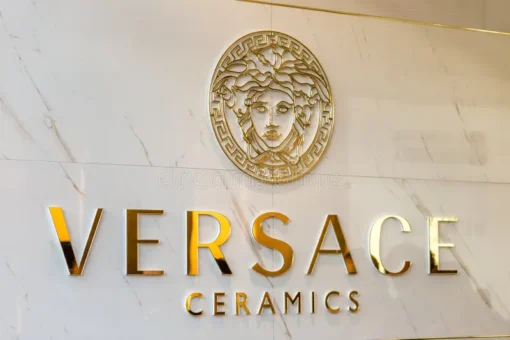
High-end brands often carry premium price tags due to reputation, exclusivity and designer collaborations.
Design
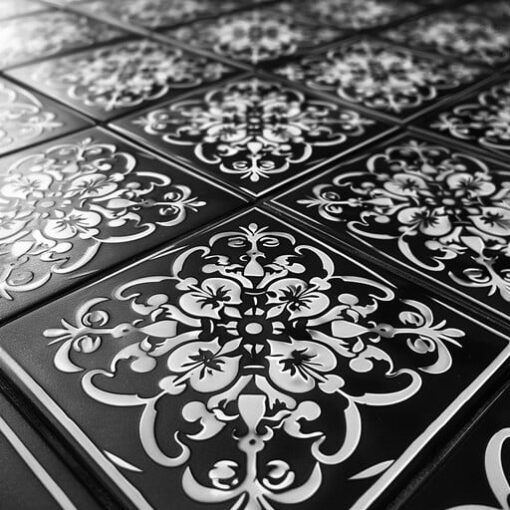
Intricate patterns, mosaics or one-of-a-kind styles can raise the cost significantly.
Rarity
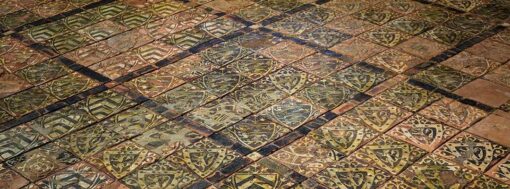
Image credit: english-heritage.org.uk
Limited production or hard-to-source materials can make a tile more expensive.
Sicis Mosaic Tiles (Italy)
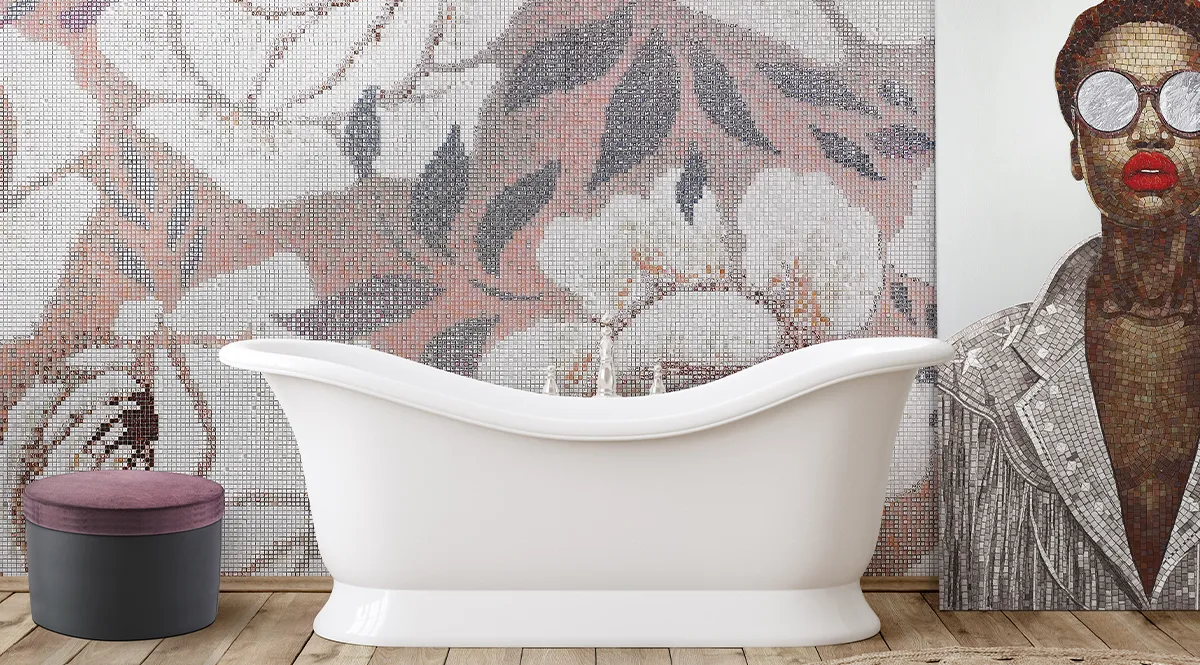
Image credit: sicis.com
Sicis is known for pushing the boundaries of tile design. Their glass mosaics are often found in luxury hotels and palaces. Some of their collections feature hand-cut tiles made from gold leaf glass or smalti, which is a high-quality Venetian glass. Each mosaic can be fully custom designed, making it both exclusive and eye-wateringly expensive.
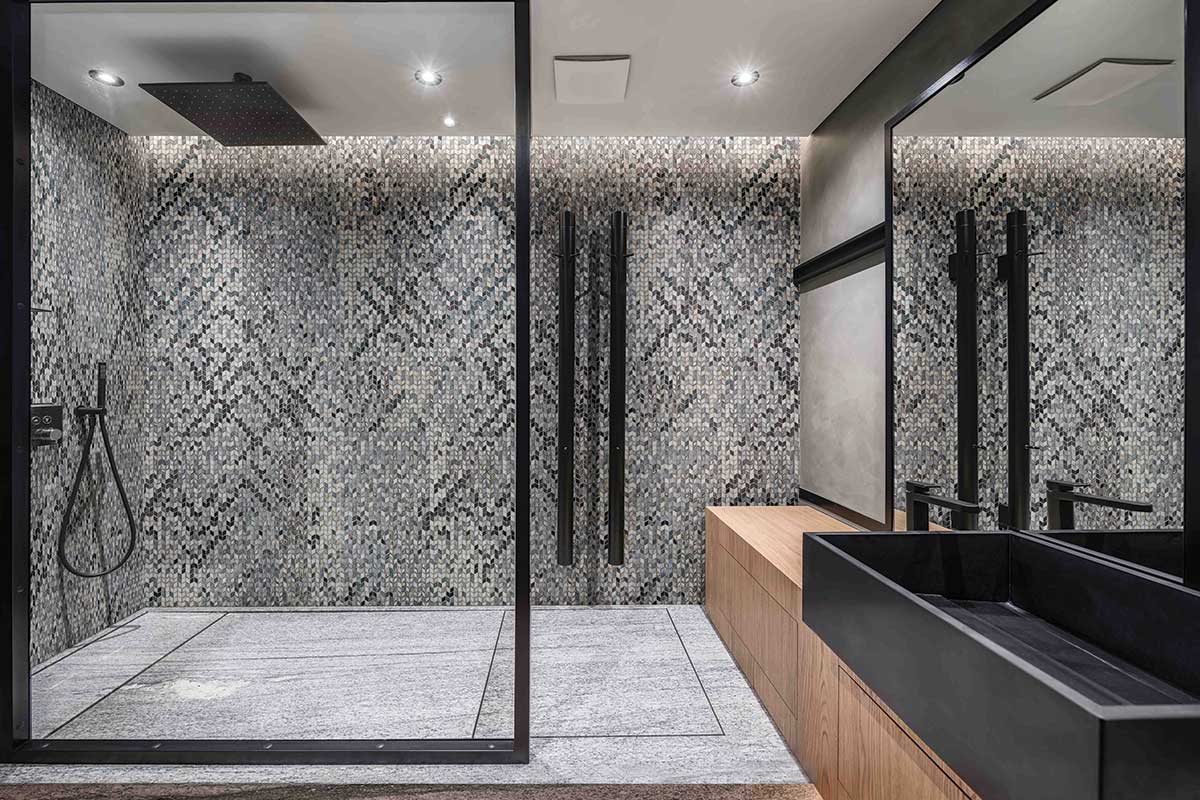
Image credit: mgsarchitecture.in
Why it’s special: Sicis blends art with craftsmanship, offering bespoke pieces that are just as much about personal expression as they are about design.
Petra Antiqua Tiles (Italy)
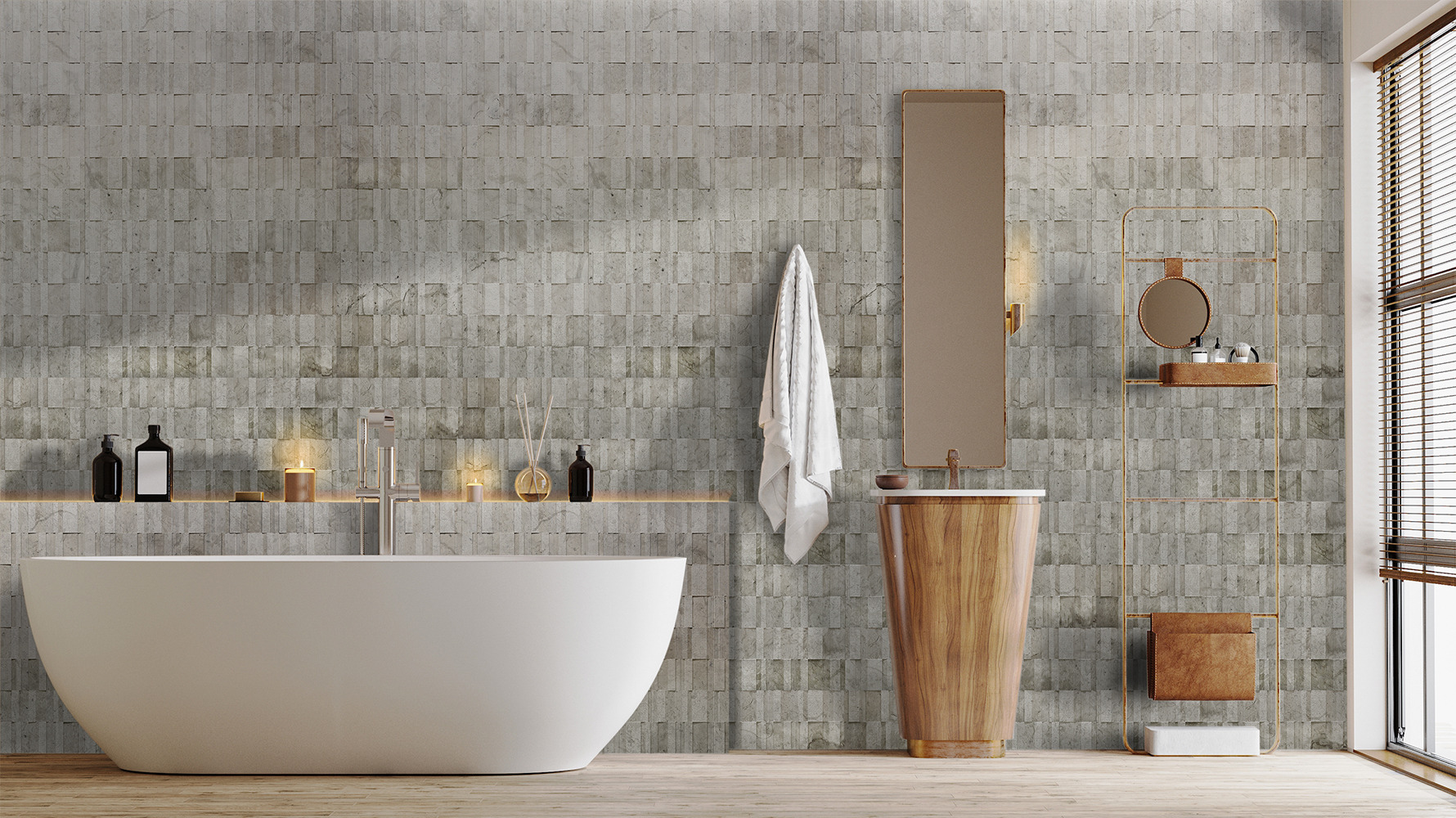
Image credit: petraantiqua.com
Petra Antiqua creates high-end stone tiles with a focus on carving and inlays. Their luxury tiles feature precious metals like gold, silver or platinum embedded into natural stone. These tiles are often used in high-end residential and commercial spaces where opulence is key.
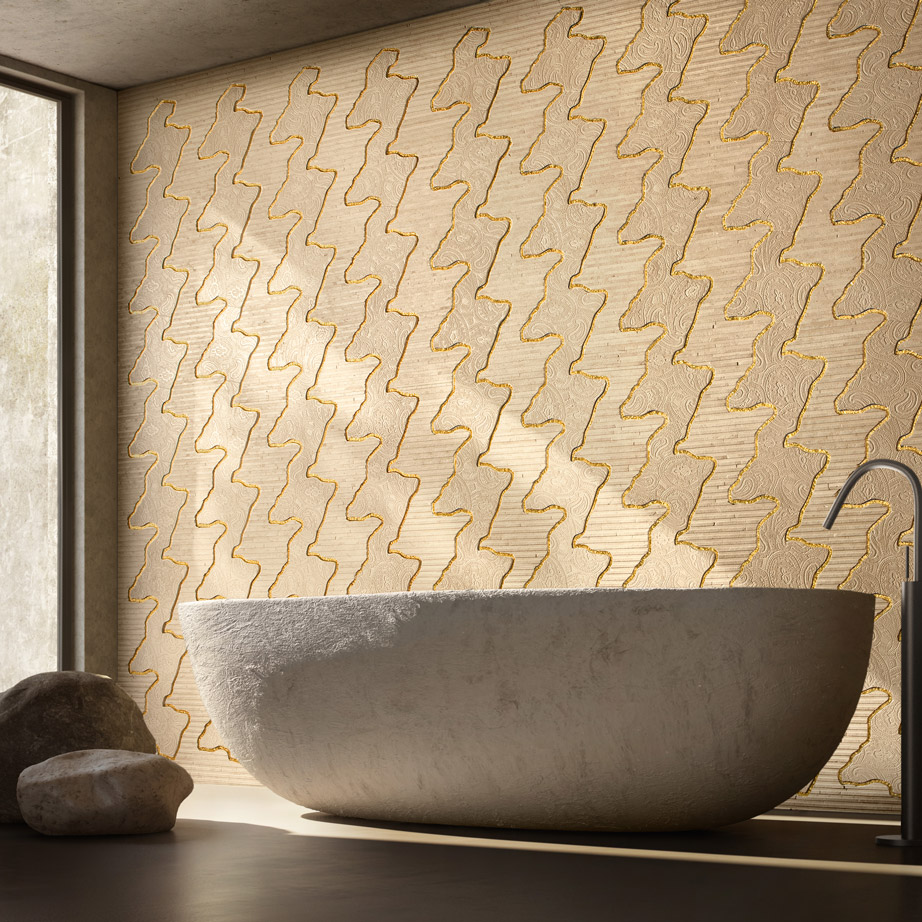
Image credit: casamiauae.com
Why it’s special: The combination of centuries-old stoneworking traditions with modern design makes every tile feel like a collectible piece.
Versace Ceramics

Image credit: versace-tiles.com
If you want glamour underfoot, Versace Ceramics is the ultimate indulgence. Created by the iconic fashion house, these tiles blend traditional Italian craftsmanship with bold, elegant design. Think ornate gold accents, intricate patterns and polished finishes.
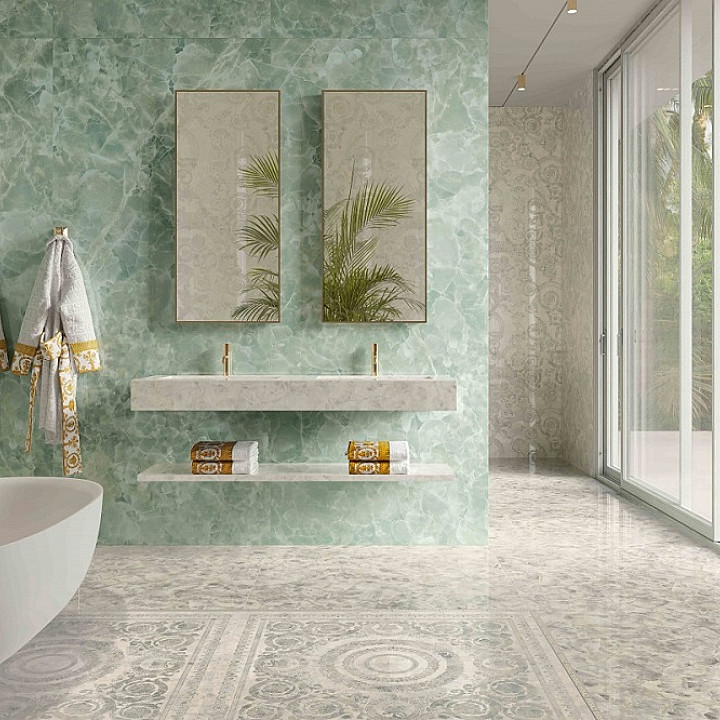
Image credit: versace-tiles.com
Why it’s special: These tiles make a statement and elevate interiors with a distinct designer edge that only Versace can bring.
Bisazza Mosaic Tiles
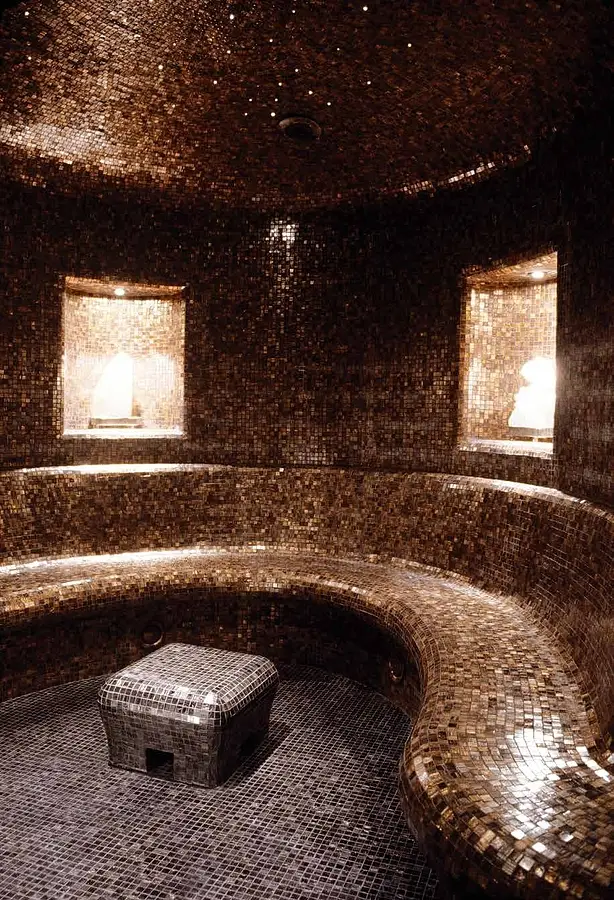
Image credit: tile.expert
Bisazza is a leader in the luxury mosaic market, offering dazzling tile designs that range from classic to contemporary. Some collections feature 24-karat gold or platinum leaf layered inside the glass. Used in boutique hotels, yachts and luxury homes, Bisazza tiles are known for their artistic flair.
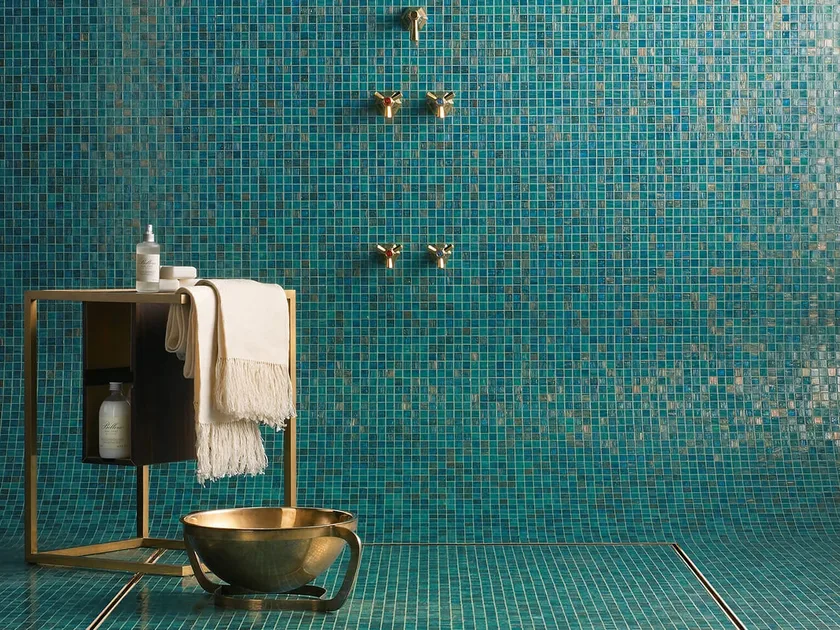
Image credit: archiproducts.com
Why it’s special: Each tile is a fusion of innovation and style, crafted to catch the eye and reflect light in stunning ways.
Antique Tiles & Historical Replicas

Image credit: somanyceramics.com
Sometimes, the most expensive tiles are not new at all. Authentic antique tiles from centuries-old buildings, especially Moroccan Zellige or Spanish Majolica, can sell for thousands. Their historical value, age and intricate craftsmanship make them highly sought-after by collectors and designers.
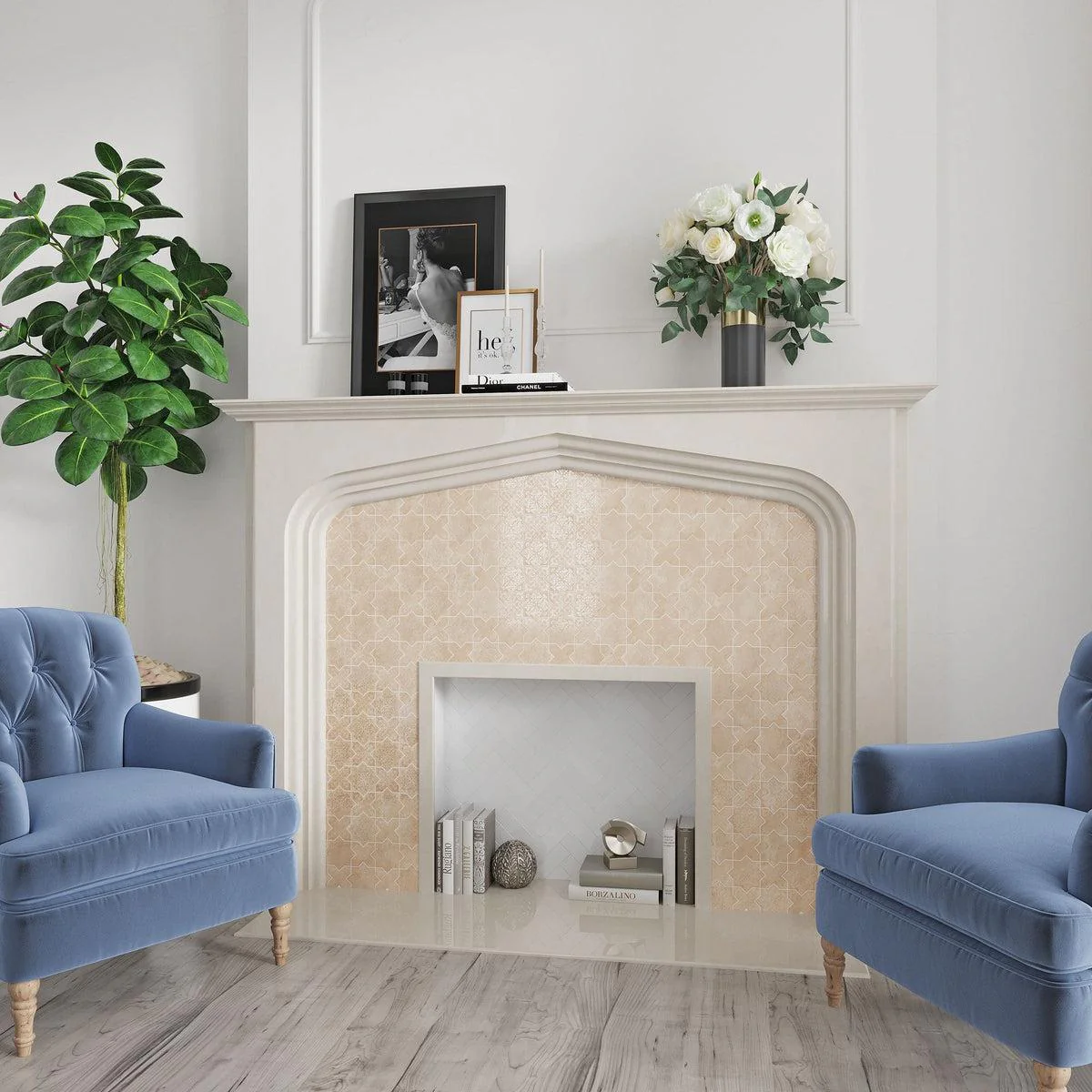
Image credit: tileclub.com
Why it’s special: These tiles tell a story. Owning one is like owning a piece of design history.
Are Expensive Tiles Worth It?
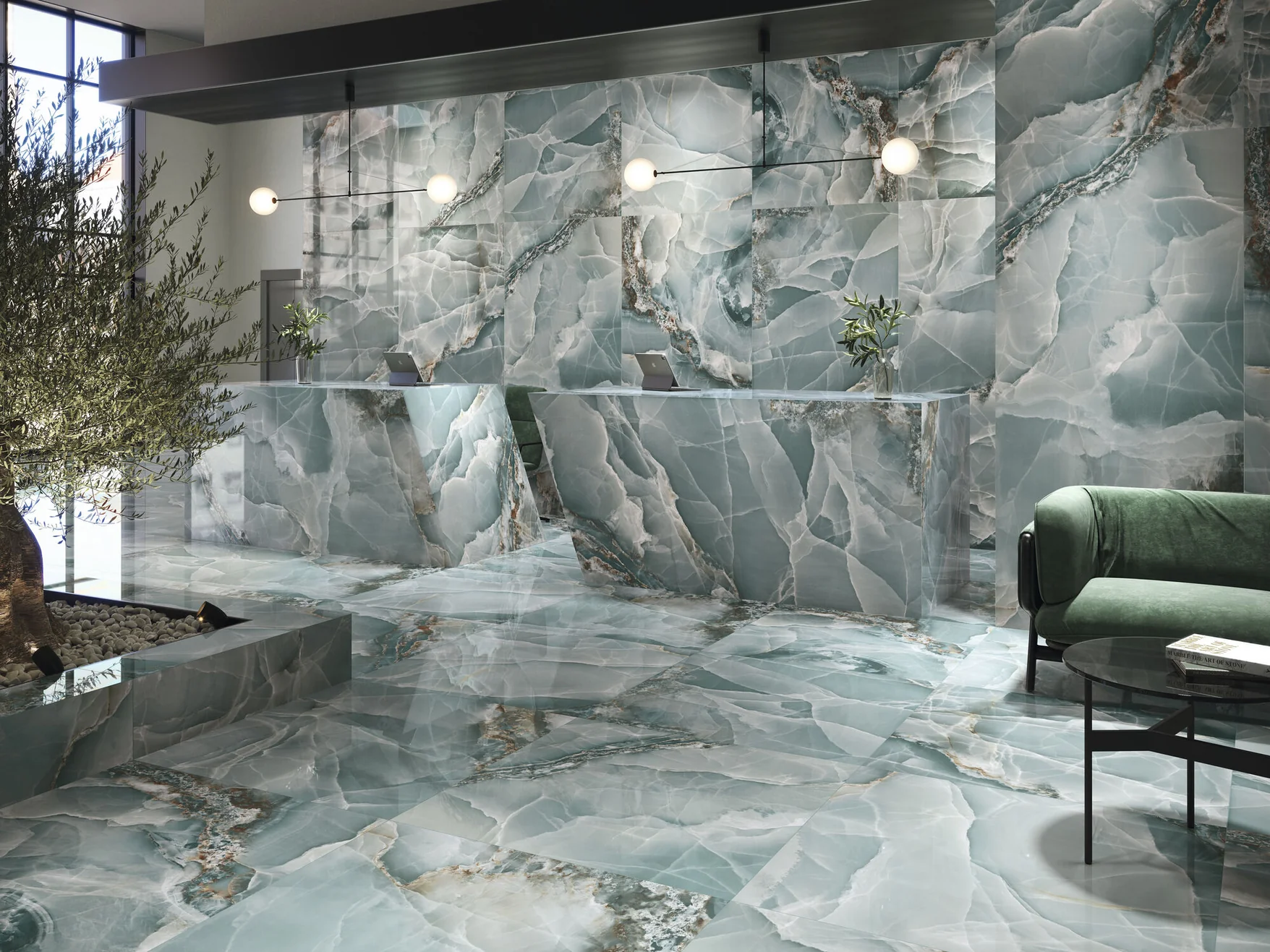
Image credit: elite-tiles.com
For most people, luxury tiles are an investment in beauty, durability and exclusivity. They often become the focal point of a room, elevating a space from ordinary to extraordinary. Whether you’re designing a high-end bathroom, a statement kitchen splashback or a bespoke feature wall, expensive tiles can be well worth the cost if you want something truly unique.
From shimmering mosaics to hand-carved stone, the world’s most expensive tiles offer more than just surface appeal. They represent craftsmanship, luxury and individuality. While they may not be for every budget, they’re certainly inspiring and can guide your choices even when you’re working with more affordable options.
Looking to elevate your space with tiles that turn heads? Explore Tiletoria’s premium tile collections for inspiration and discover the perfect fit for your next design project.
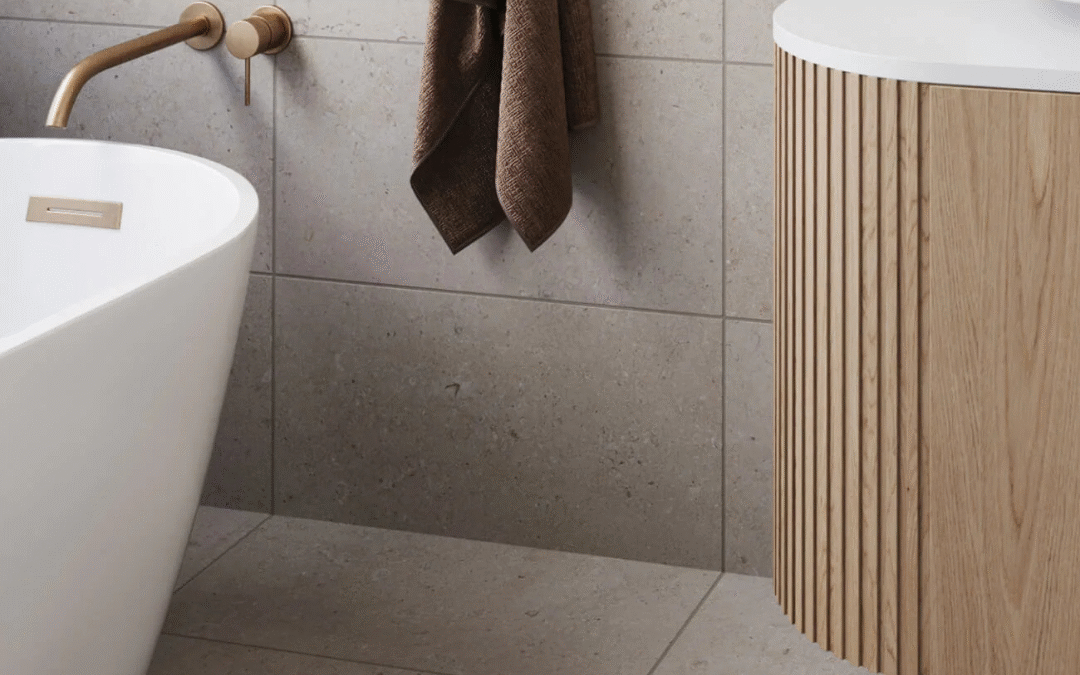
bathroom, blog, how to articles
If your bathroom feels more cramped than calming, you’re not alone. Many homes have compact bathrooms that can feel tight and awkward, but with the right design choices, you can easily transform your space into one that feels open, airy and more functional. Here’s how to make a small bathroom feel bigger using clever, practical design tips that really work.

Image credit: edwardmartin.com
Table of Content:
Choose Light Tiles and Colours
Go Big with Tiles
Use Mirrors to Add Depth
Opt for Floating Fixtures
Use Glass Shower Panels
Choose Consistent Flooring
Let in Natural Light
Use Vertical Space
Stick to a Simple Colour Scheme
Choose Light Tiles and Colours
Light colours instantly make a space feel larger. Opt for pale tiles, paint and accessories in shades like white, soft grey, beige or pastel tones. These reflect more light and give the illusion of space. Glossy finishes can also help bounce light around the room, creating a more open feel.
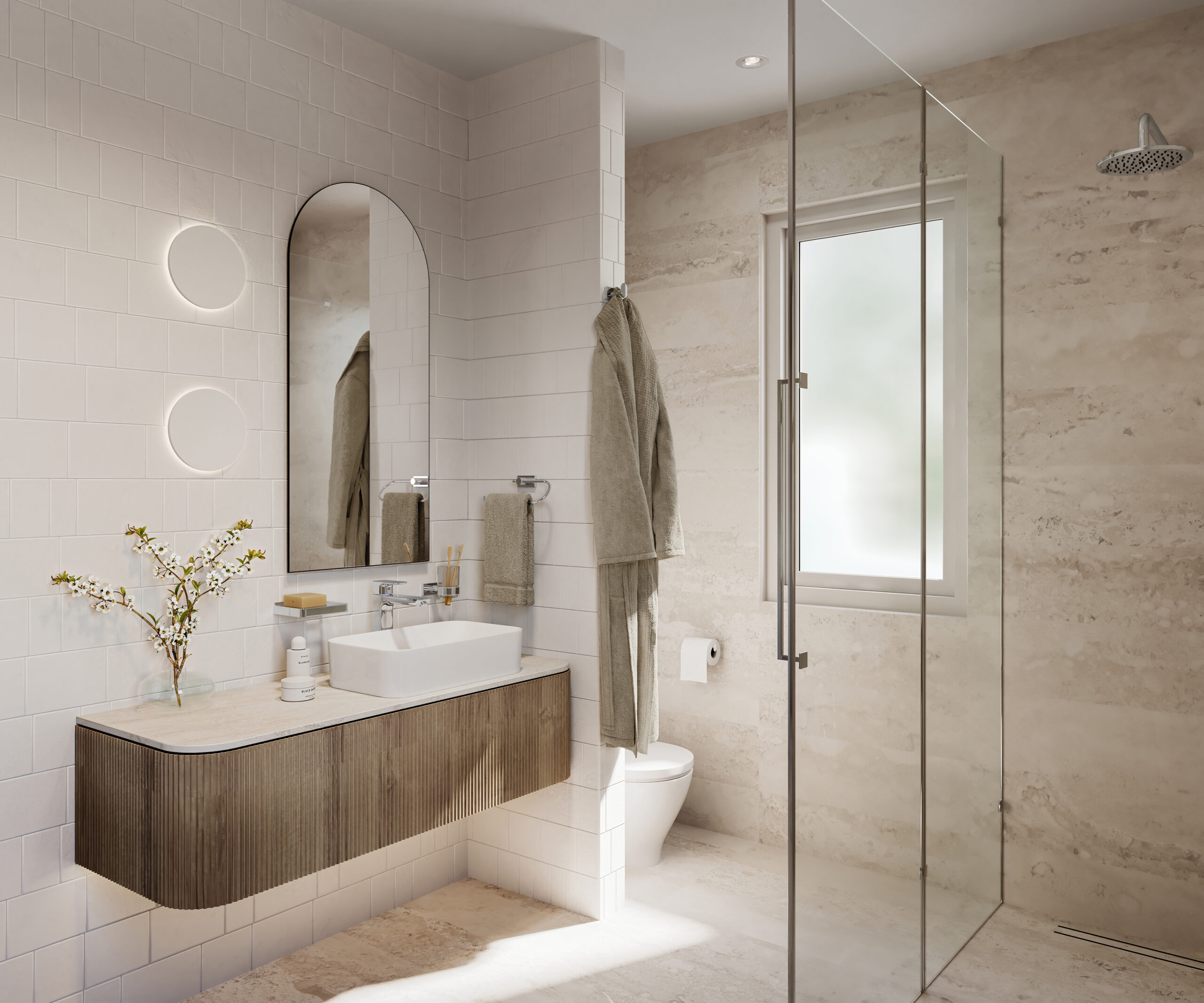
Image credit: bathroom butler
For more tips on tile selection, check out our How to Choose Tiles by Room: A Room-by-Room Guide to find the best option for your space.
Go Big with Tiles
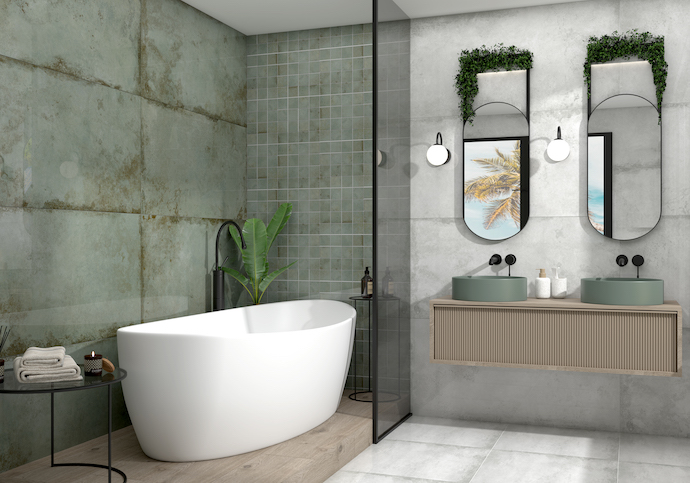
Image credit: visi.co.za
It might seem counterintuitive, but large-format tiles can actually make a small bathroom feel bigger. Fewer grout lines create a seamless look that visually expands the space. Floor-to-ceiling tiles on walls also draw the eye upward, making the room appear taller.
Use Mirrors to Add Depth
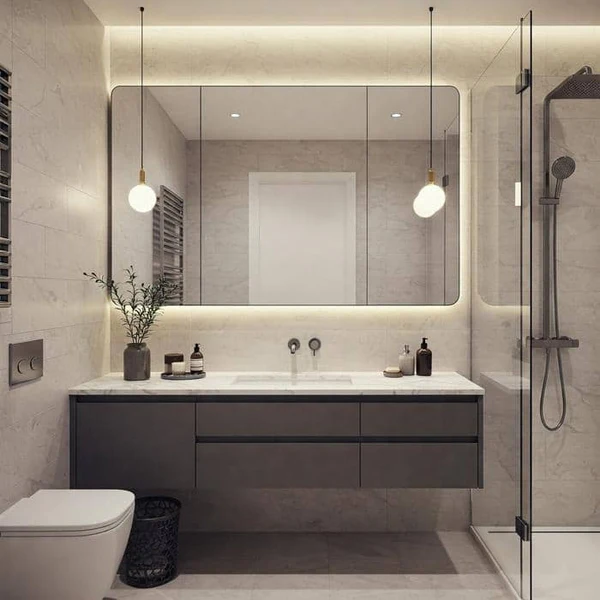
Image credit: the-rugs.com
A well-placed mirror can do wonders in a small bathroom. Large mirrors reflect both natural and artificial light, making the room feel brighter and more spacious. Consider a mirrored cabinet for added storage and style.
Opt for Floating Fixtures
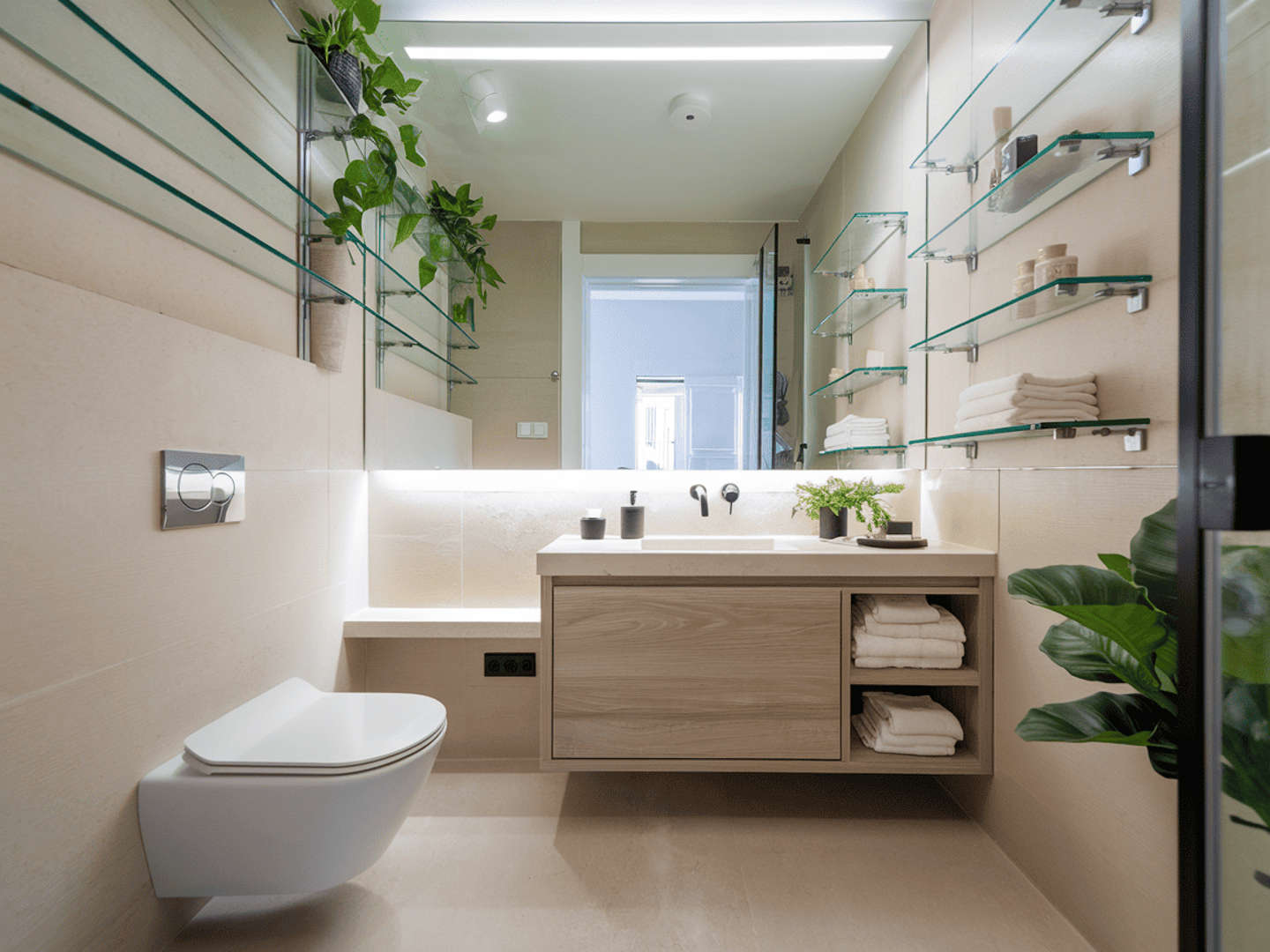
Image Credit: msn.com
Wall-mounted toilets, vanities and basins free up floor space and help the room feel less cluttered. The visible floor area underneath these fixtures adds a sense of openness and flow.
Keep the Floor Clear
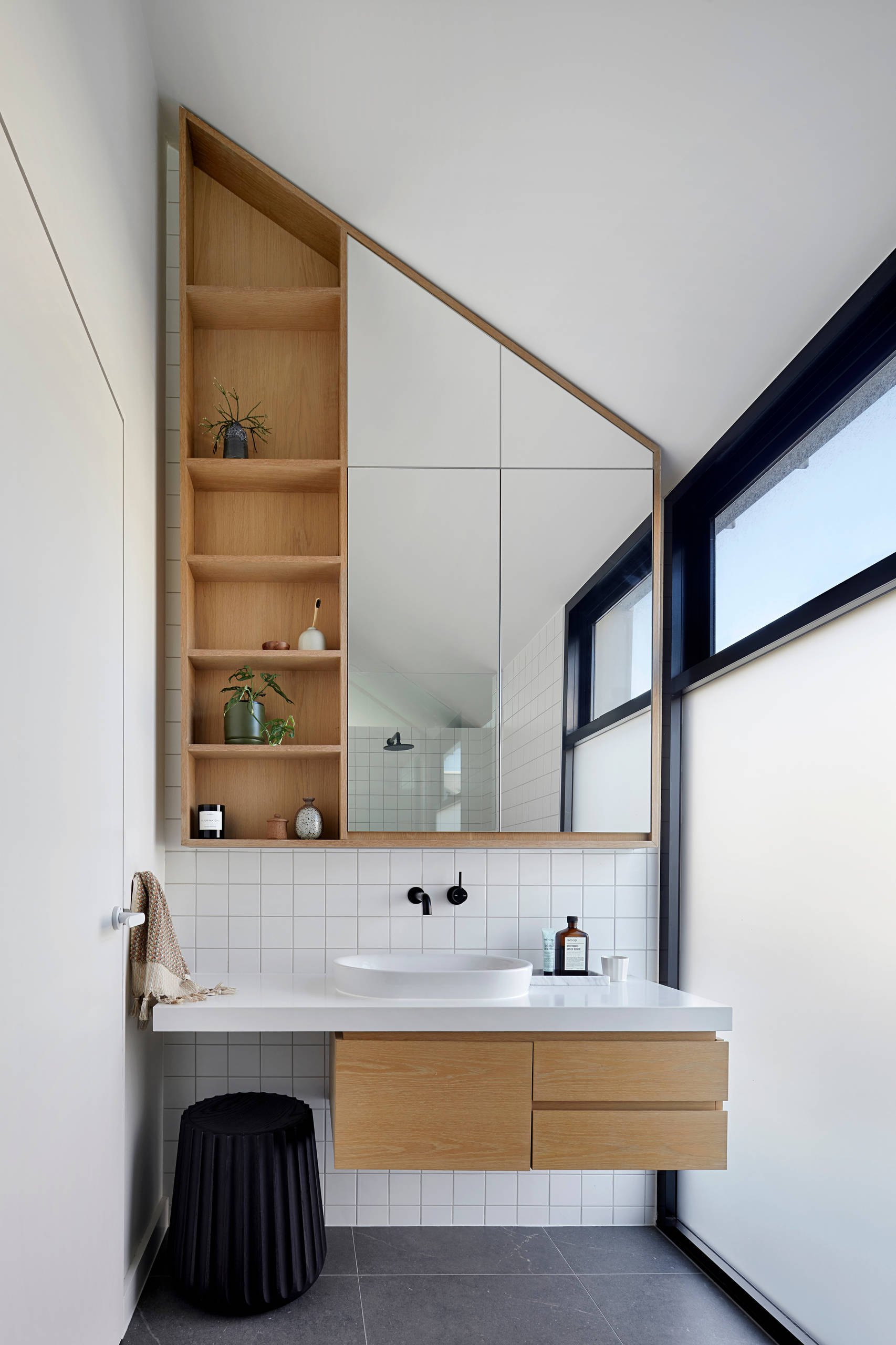
Image Credit: Houzz.com
The more visible your floor is, the bigger your bathroom will feel. Use slimline storage units, corner shelves and hooks to keep toiletries off the ground and surfaces tidy. A tidy space always feels roomier.
Use Glass Shower Panels
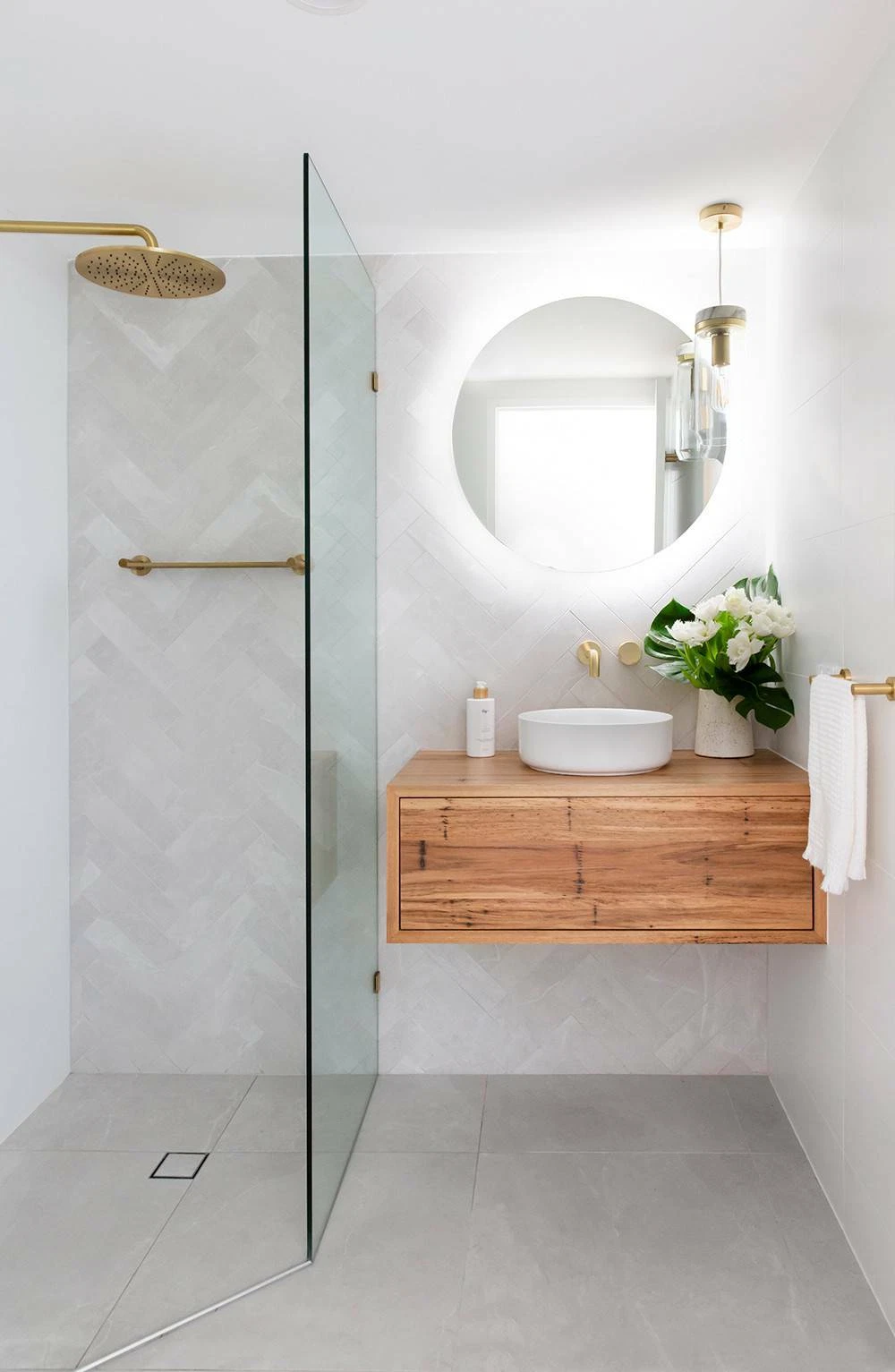
Image Credit: Houzz.com
Swap out shower curtains or bulky enclosures for clear glass panels. They open up the space visually, allowing your eye to travel across the room without interruption. Frameless panels are ideal for creating a sleek, modern look.
Choose Consistent Flooring
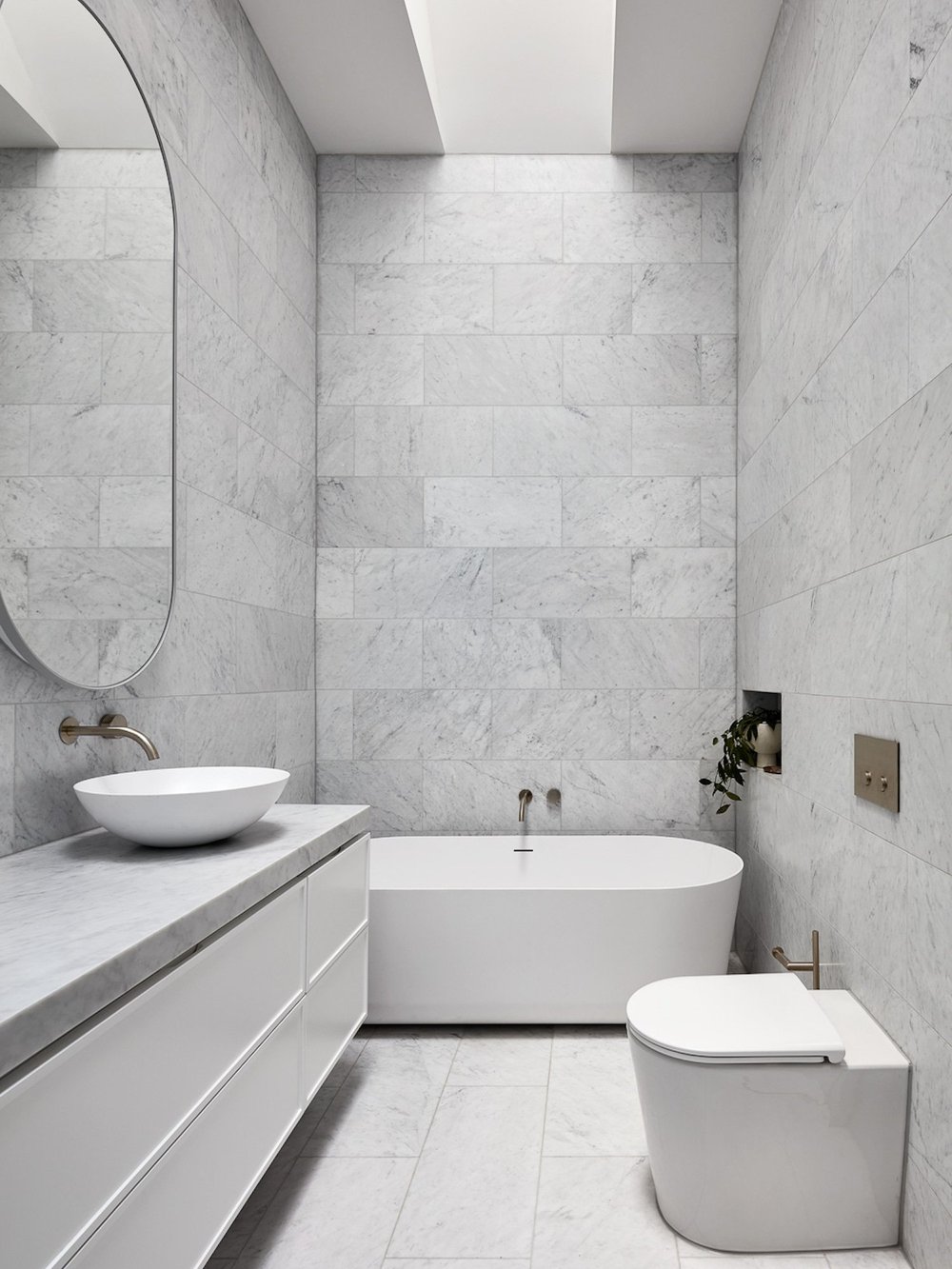
Image Credit: zephyrandstone.com.au
Using the same flooring throughout the bathroom, including inside the shower, can make the space look larger. Continuous flooring draws the eye through the room without any visual stops.
Let in Natural Light
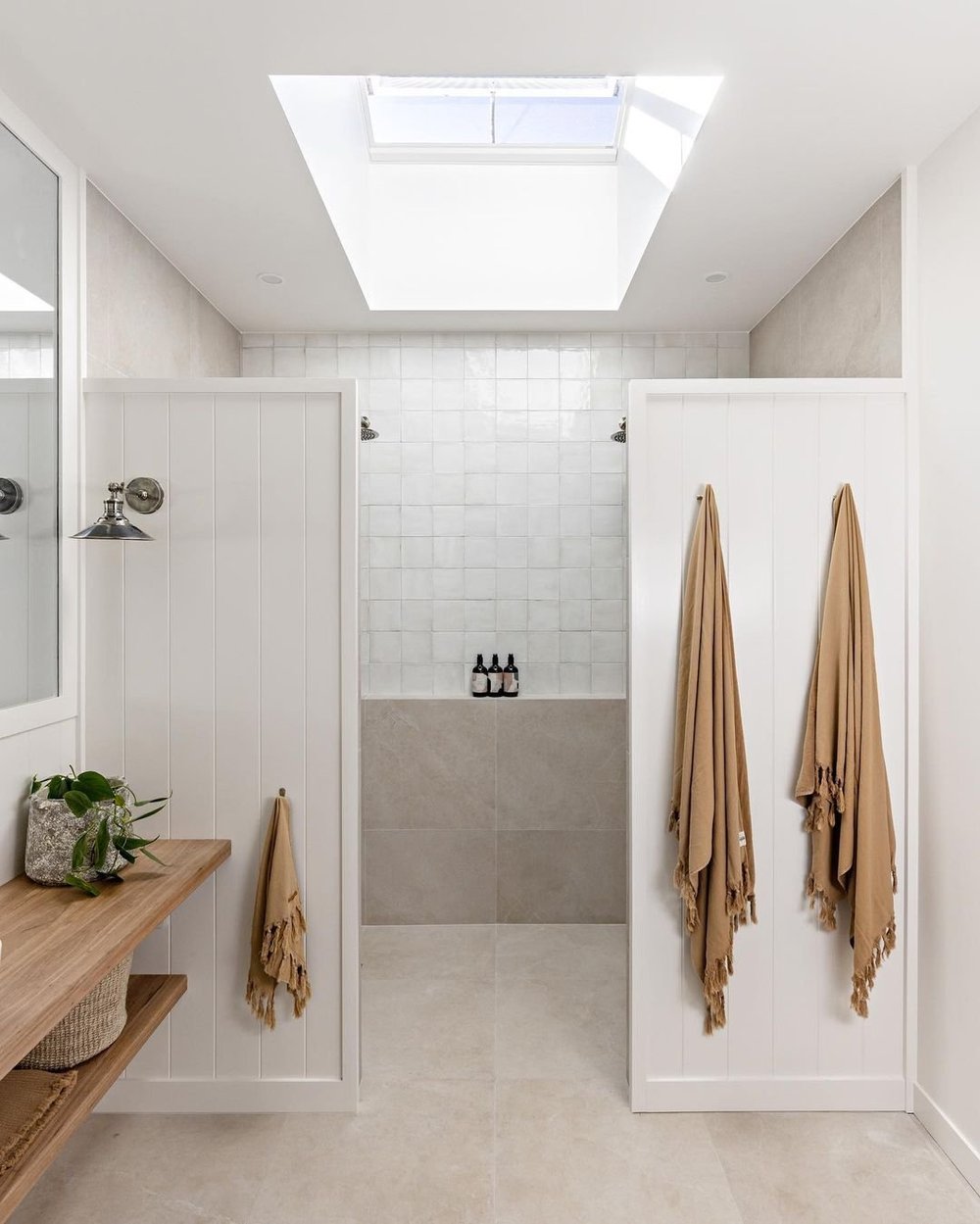
Image Credit: zephyrandstone.com.au
If possible, maximise natural light. Frosted windows, skylights or solar tubes can brighten your bathroom without compromising privacy. More light = more space, even if it’s just an illusion.
Use Vertical Space
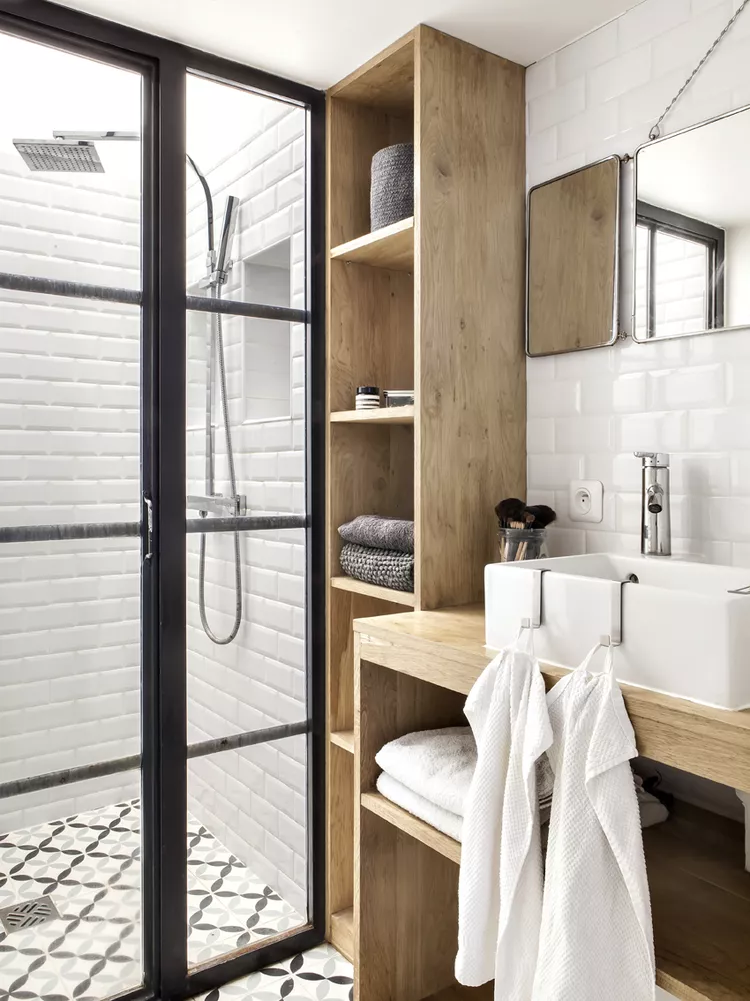
Image Credit: spacefactory.fr
When floor space is limited, think vertically. Install tall, narrow cabinets or open shelves above the toilet or door. These storage solutions free up space below while keeping essentials within reach.
Stick to a Simple Colour Scheme
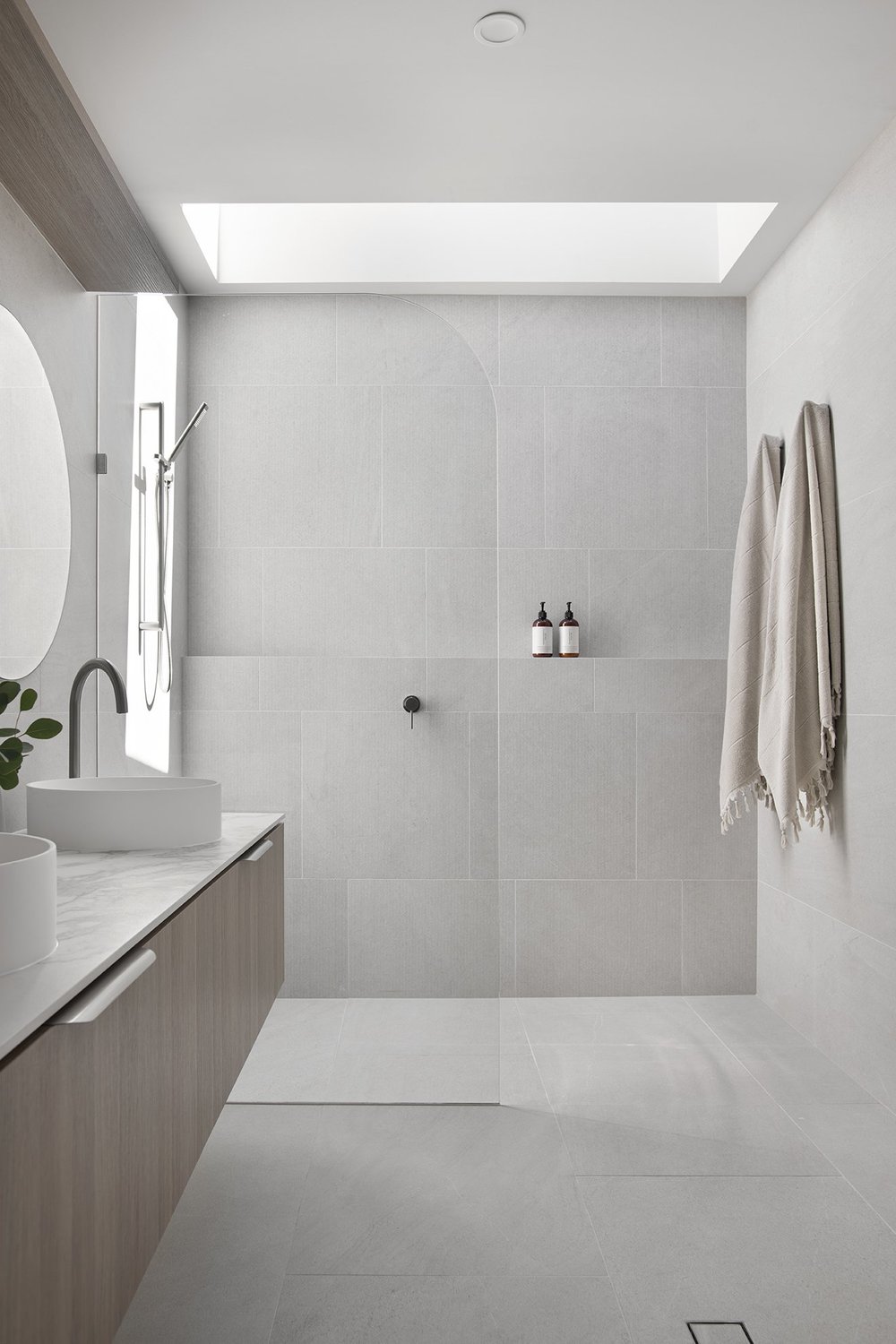
Image Credit: zephyrandstone.com.au
Too many colours or patterns can overwhelm a small space. Stick to a cohesive palette for your tiles, walls and fixtures to maintain a sense of calm and continuity throughout.
For advice on choosing the right grout colour, read our guide “lesson/tip: how to choose the right grout colour”
You don’t need to knock down walls to make your bathroom feel bigger. Smart design choices, from light colours and large tiles to floating fixtures and clever storage, can completely transform your space.
Ready to upgrade your small bathroom? Visit tiletoria for a wide range of space-enhancing tiles and accessories to help you bring your vision to life.
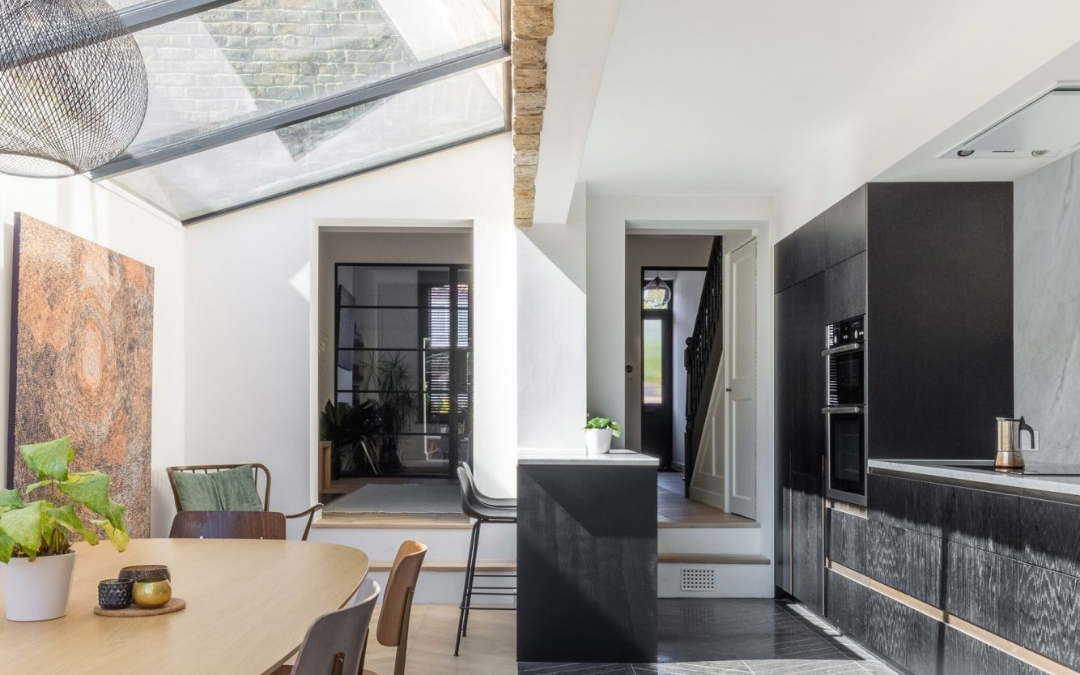
blog
Open-plan homes are all about flow, light and creating a sense of spaciousness. But when it comes to flooring, using just one material across the entire space can sometimes fall flat. Mixing and matching different flooring types is a smart way to define areas, add texture and enhance the overall aesthetic of your home — without compromising the open-plan feel.
Done right, this approach brings warmth, personality and functionality to your layout. Here’s how to successfully mix and match flooring in an open-plan home.
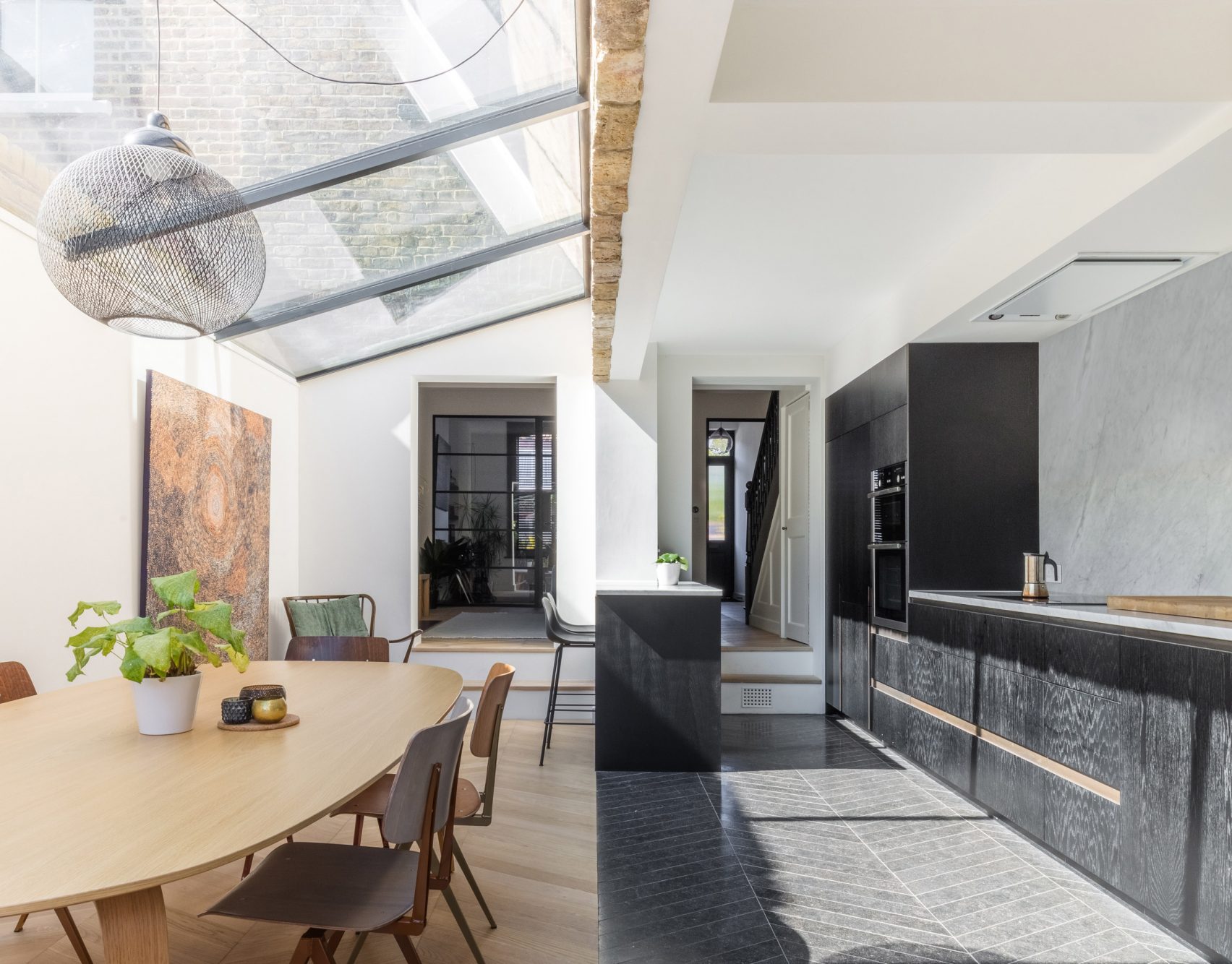
Image credit: livingetc.com
Table of Content:
Define Zones with Flooring
Choose Complementary Colours and Textures
Use Transition Strips or Patterns
Consider Practical Needs for Each Area
Keep the Flow with Consistency
Don’t Be Afraid to Get Creative
Define Zones with Flooring
The beauty of an open-plan design is the ability to move freely between living, dining and kitchen areas. But to avoid a space that feels too blended or confusing, it helps to use different flooring types to create subtle boundaries.
For example:
Use luxury vinyl tiles or ceramic tiles in the kitchen area for easy cleaning and water resistance.
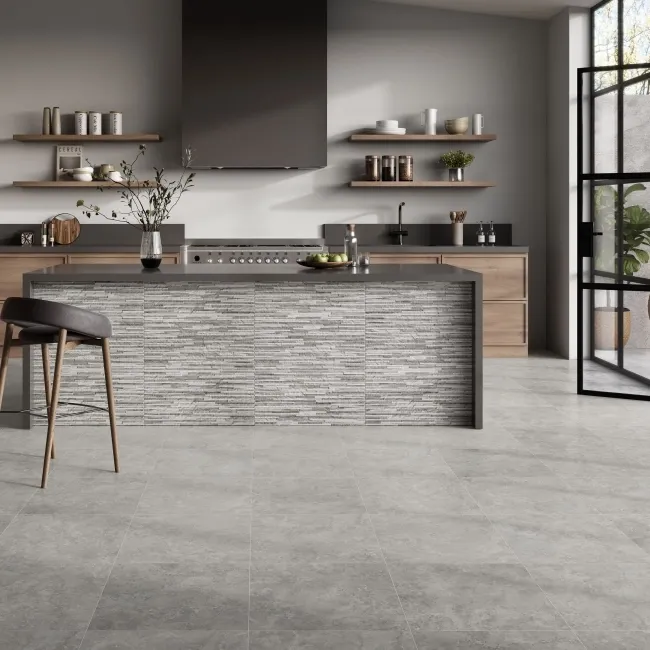
Image credit: tilemountain.co.uk
Transition to wood-look laminate or engineered wood in the dining and living areas to bring warmth and comfort.
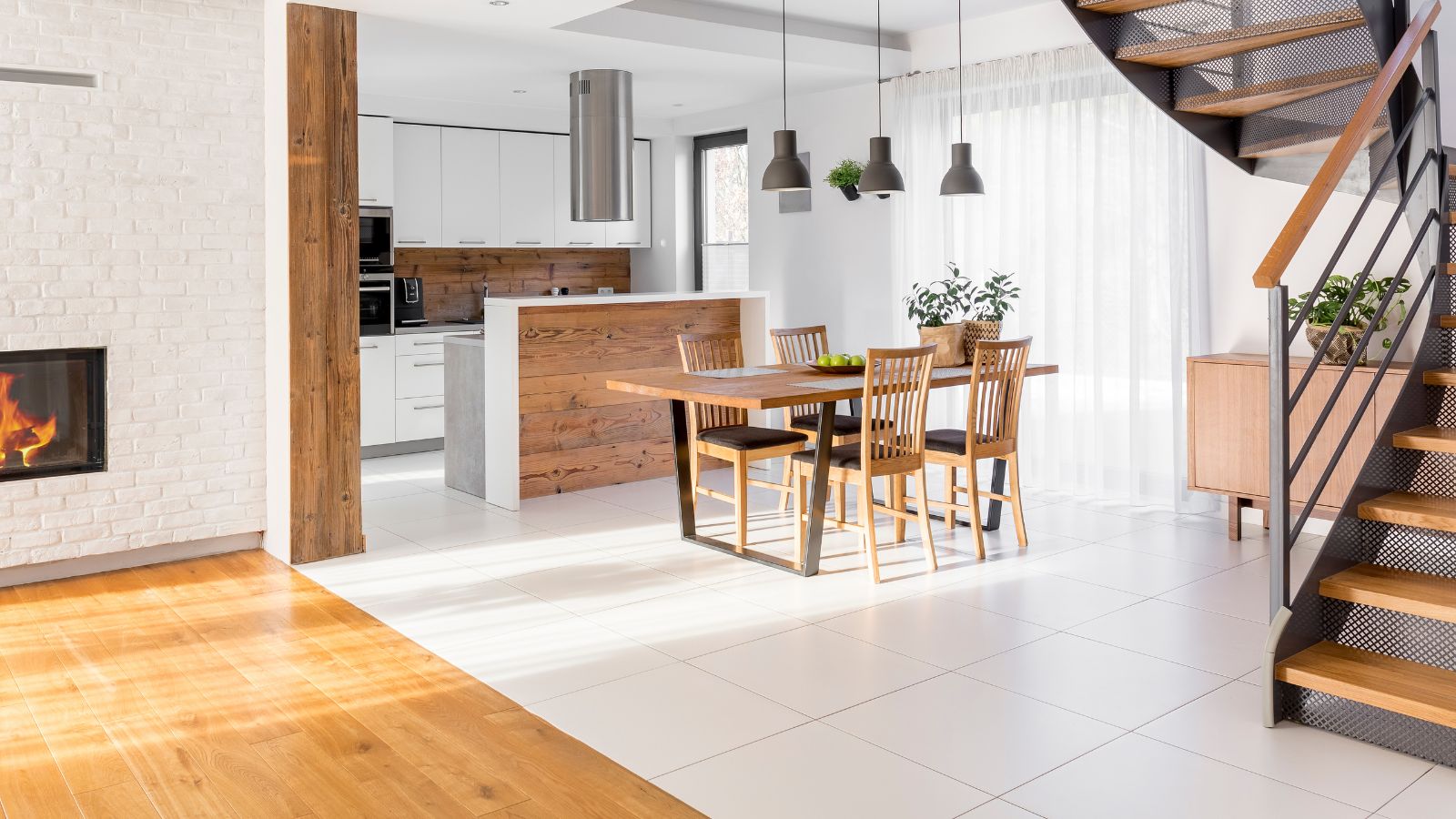
Add a rug in the lounge to further define the space without changing the hard flooring underneath.
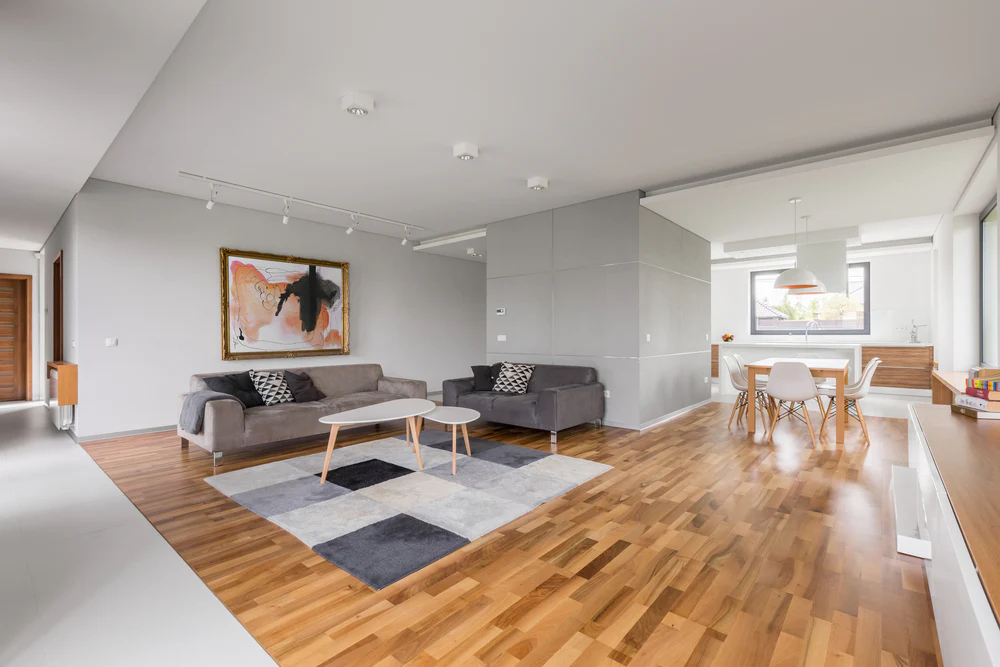
This zoning technique helps guide the eye and naturally separates functional areas, while still feeling cohesive.
Choose Complementary Colours and Textures
One of the biggest mistakes people make when mixing flooring is choosing styles that clash. To keep things visually balanced:
Stick to the same colour palette or tones — cool greys with cool browns, or warm beiges with honey woods.

Mix textures, not chaos. Combine a smooth polished tile with a matte timber-look laminate or a tactile vinyl plank.
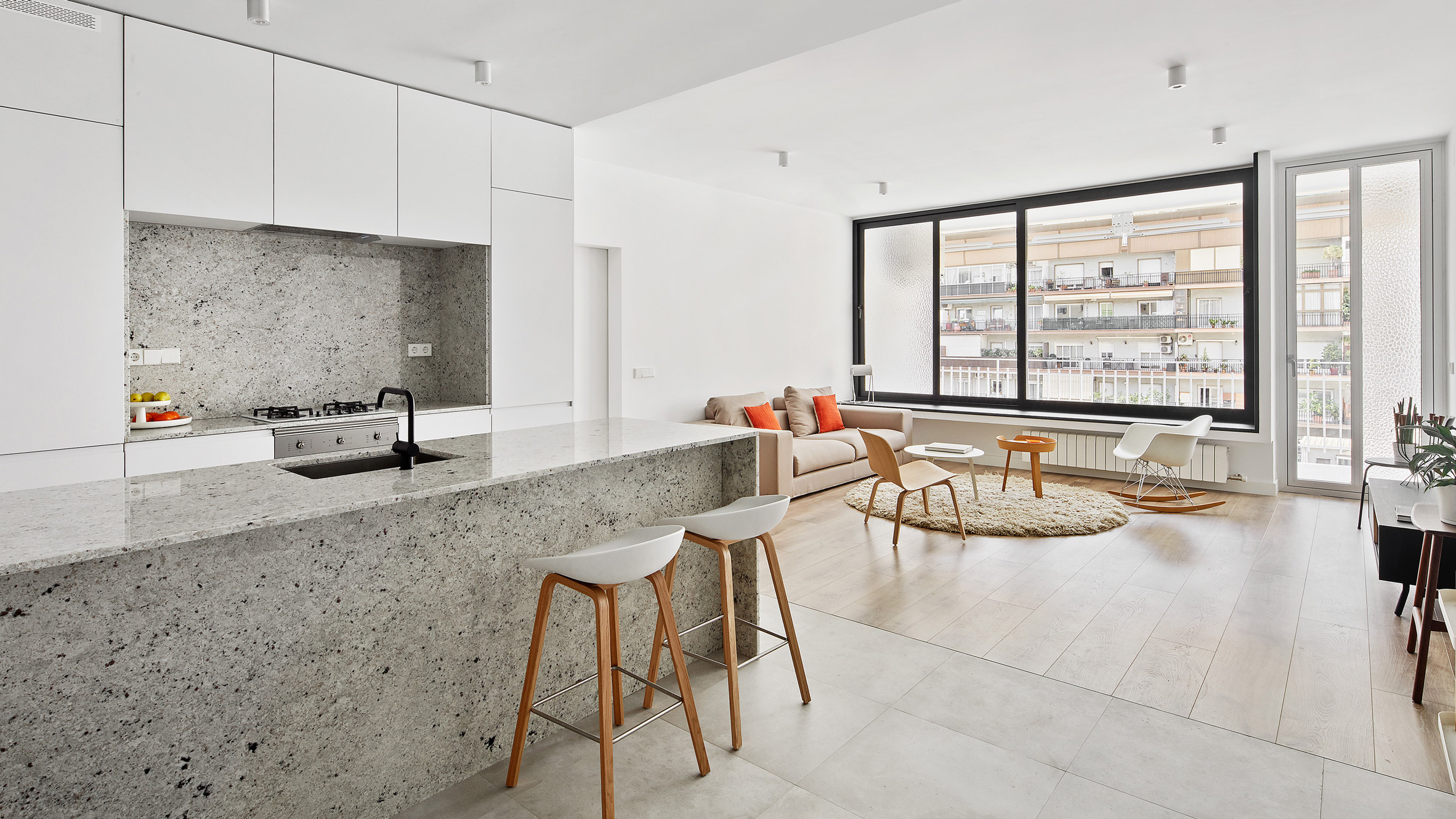
Image credit: dezeen.com
Use contrast for impact, but keep it intentional. For instance, pairing dark herringbone wood with pale concrete-look tiles can create a bold and modern finish.
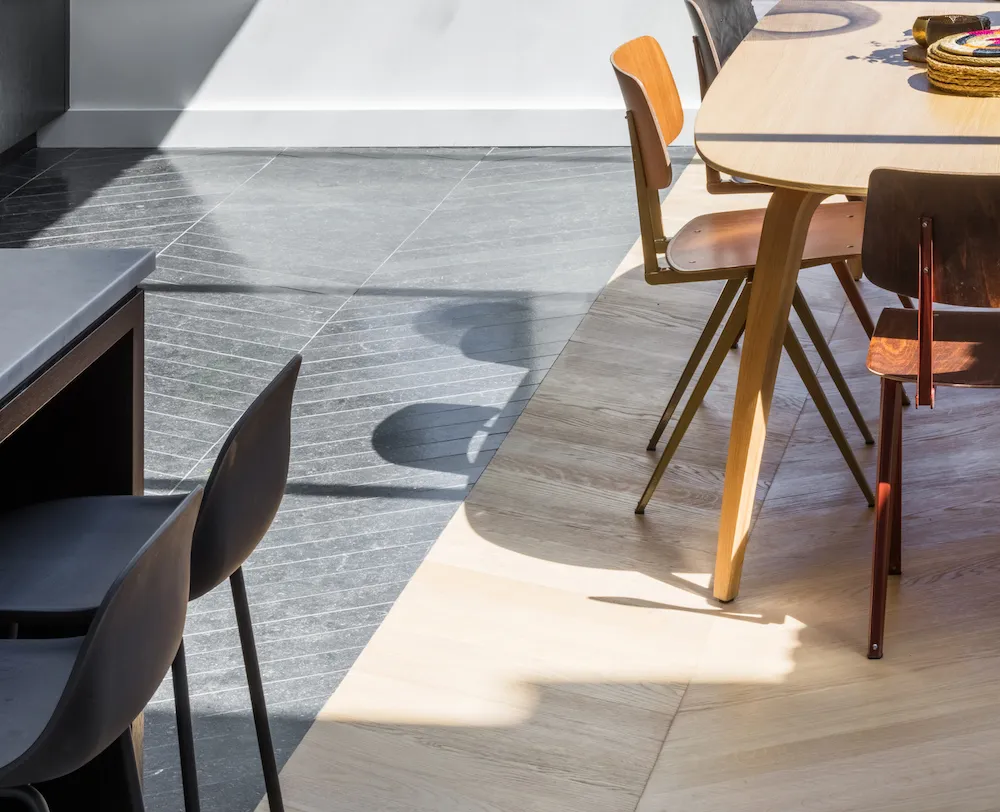
Image credit: livingetc.com
The goal is harmony, not uniformity.
Use Transition Strips or Patterns
When moving from one flooring type to another, a transition strip keeps the change clean and professional. These strips come in various styles — wood, metal or rubber — and they help avoid trip hazards while giving your floors a polished look.
Alternatively, use layout patterns to your advantage. Think:
A herringbone wood floor meeting large-format tiles with a diagonal line.
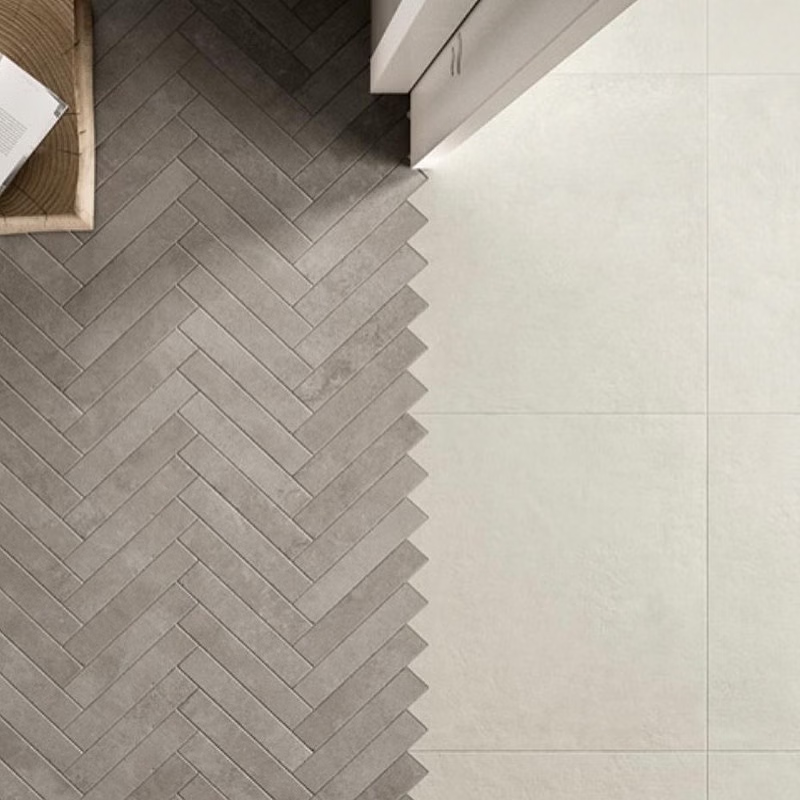
Image credit: houszed.com
Hexagonal tiles fading into oak planks for a seamless, artistic transition.

Image credit: houszed.com
These small design choices make a big visual impact and are perfect for modern open-plan interiors.
Consider Practical Needs for Each Area
Different rooms have different requirements. In an open-plan home, you’ll want flooring that’s:
Water-resistant for kitchens and utility zones.
Durable and scratch-resistant for high-traffic living and dining areas.
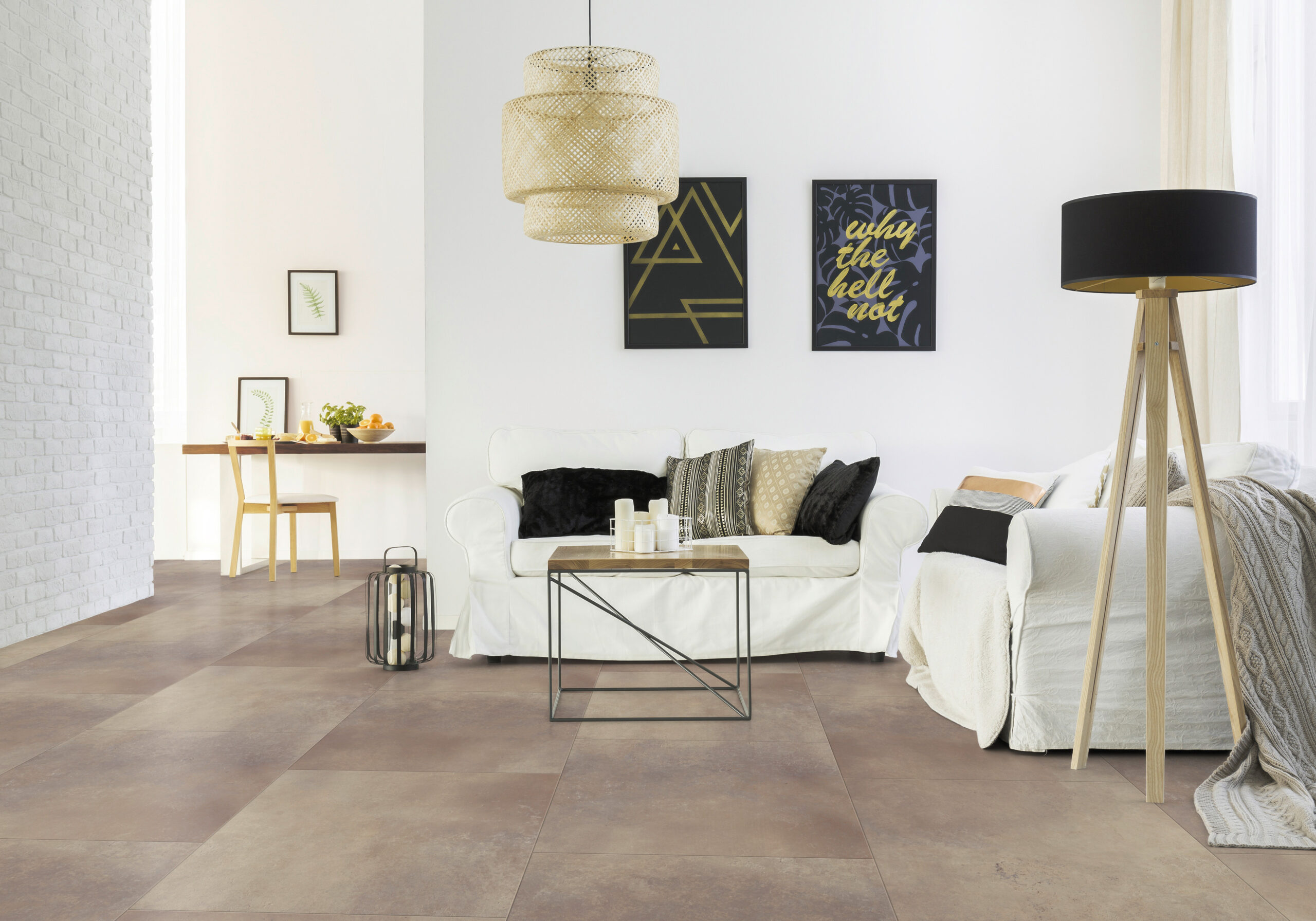
Comfortable and warm underfoot for lounging spaces.
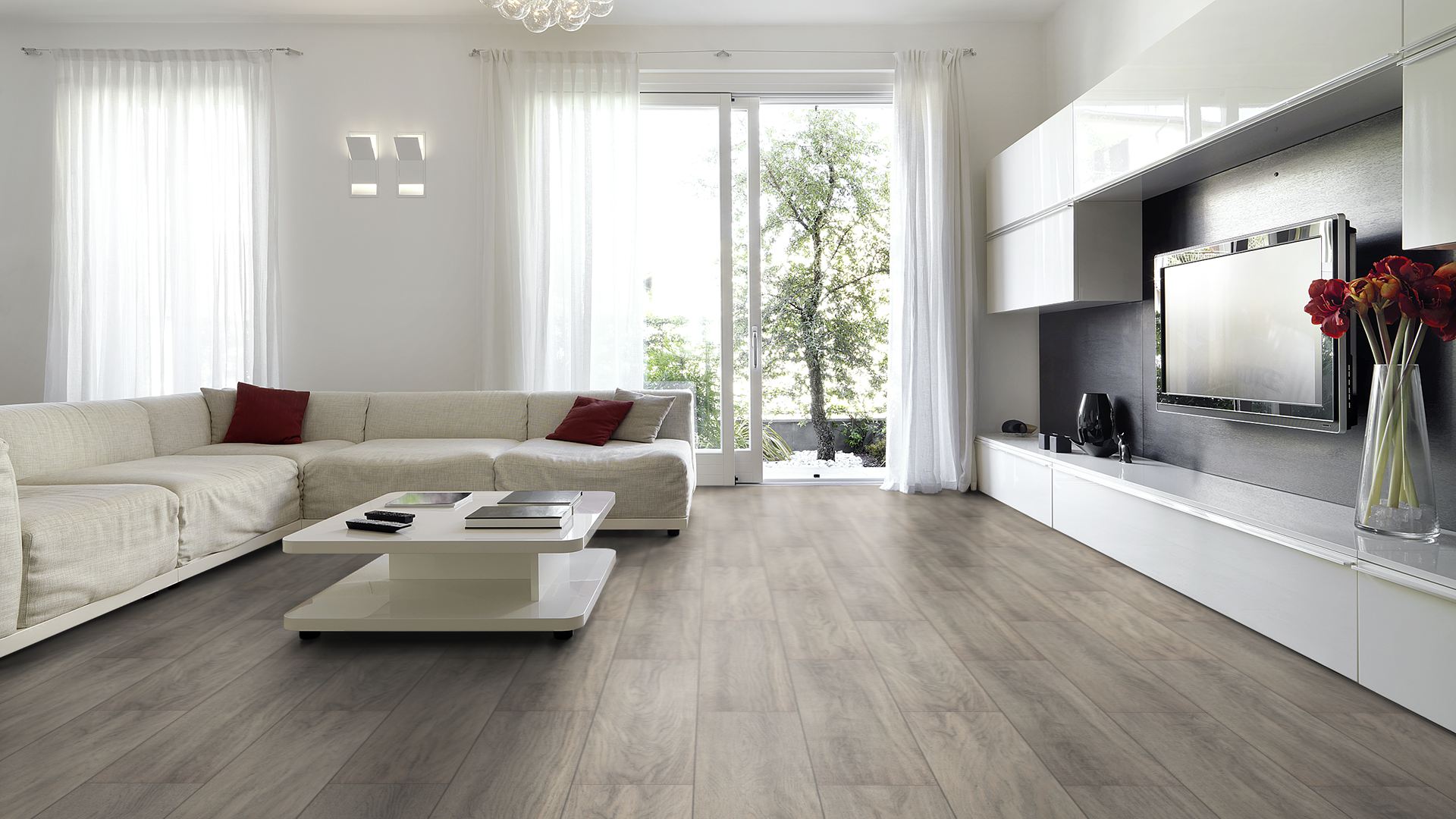
By mixing flooring types based on function, you’ll not only improve the look of your home but also extend the lifespan of your surfaces.
Keep the Flow with Consistency
Yes, mixing flooring adds interest — but it still needs to feel like one cohesive space. To maintain that sense of flow:
Keep the plank size or tile shape consistent across the different materials.

Use the same grout colour if transitioning between tiled areas.
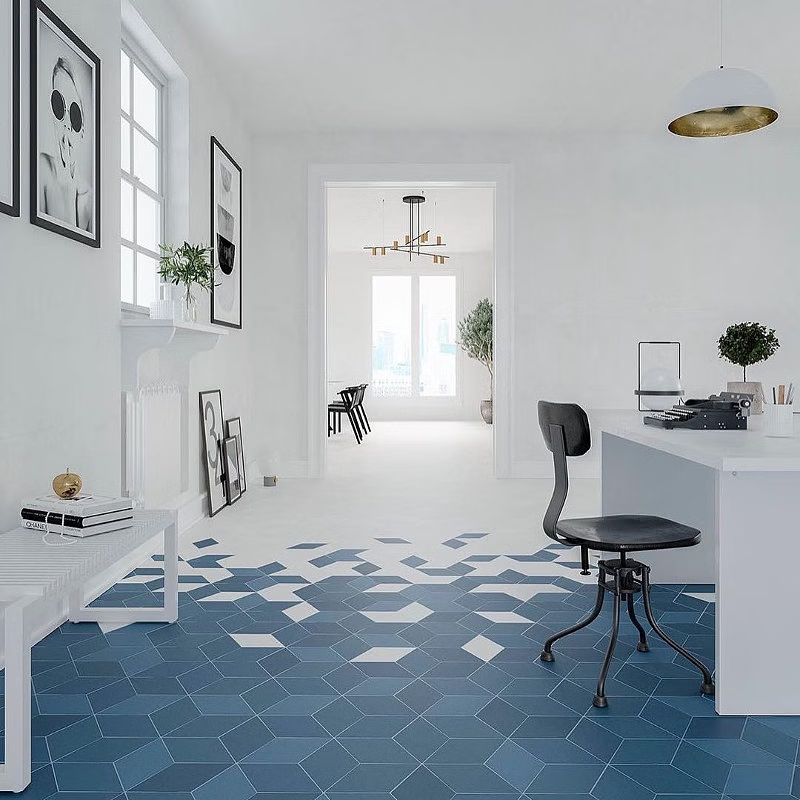
Image credit: houszed.com
For advice on choosing the right grout colour, read our guide “Lesson/Tip: How To Choose The Right Grout Colour“.
Stick with one main visual style, like modern minimalism or rustic charm, so your floors don’t feel mismatched.
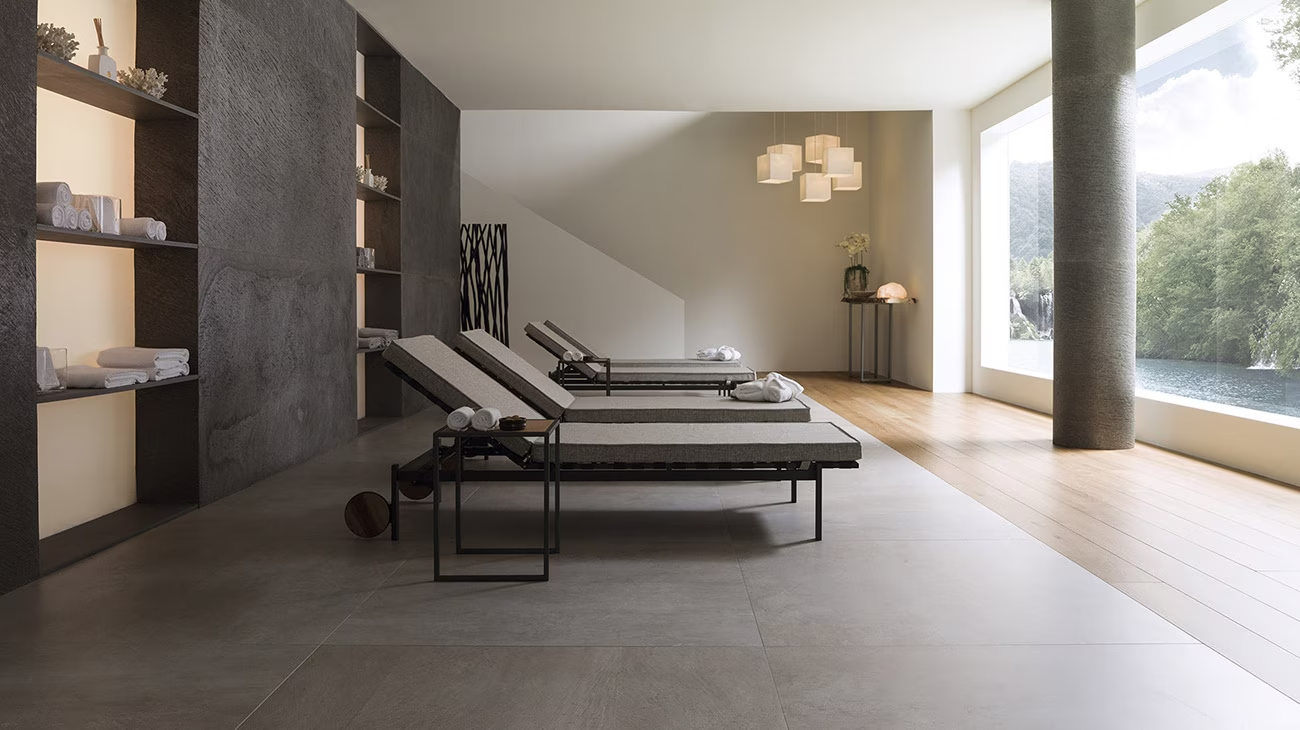
Image credit: porcelanosa.com
Don’t Be Afraid to Get Creative
Mixing flooring doesn’t have to be subtle. You can make bold design choices with confidence:
Try patterned tiles under a dining table.
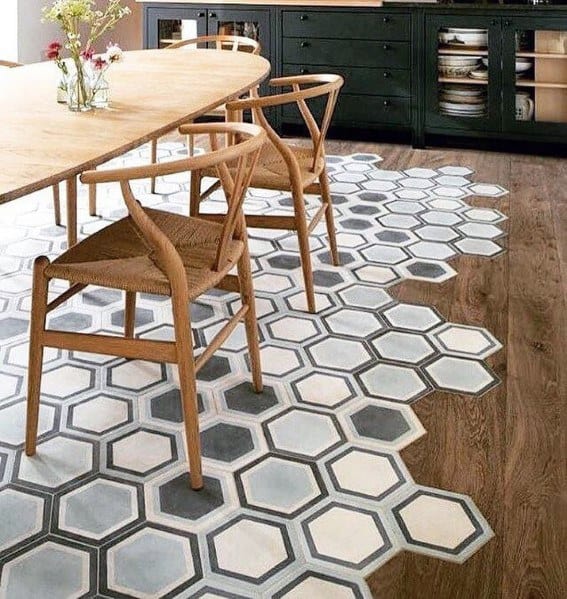
Use dark flooring around the perimeter of a room and a lighter option in the centre.
Mix wood-look vinyl with real wood to play with natural and industrial textures.
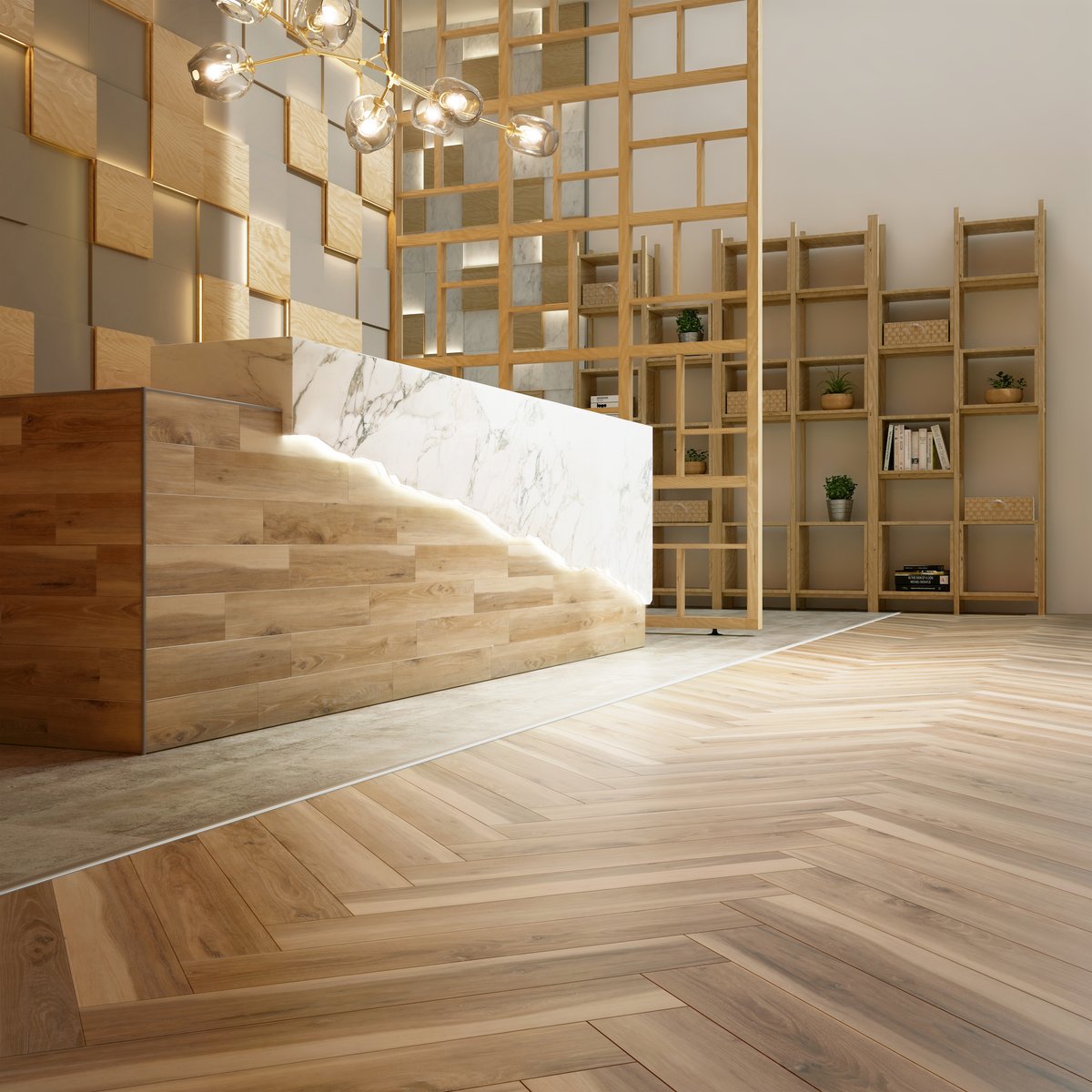
Open-plan flooring design is your chance to showcase personality, and a creative combo can turn a practical layout into something truly unique.
When it comes to flooring in an open-plan home, variety is your friend — as long as it’s intentional. Mixing flooring types lets you define spaces, add visual interest and choose the best material for each area’s function. With the right approach, your open-plan home will feel cohesive, stylish and practical.
Looking for the perfect mix of flooring? Explore Tiletoria’s wide range of tiles, laminate, vinyl and more to create a home that flows beautifully from one space to the next.






















































































